22-27 April 2017
Day One
Our first event in Rome - an awe inspiring way to begin - seeing Pope Francis perform his weekly Wednesday address to thousands of people in St Peter's Square. The mood here was both festive and solemn in a sporting event sense, if that makes any sense at all. You might think we were standing just below his "pulpit" (actually a window of his apartment quarters) - but see below in the next photo.
Our first event in Rome - an awe inspiring way to begin - seeing Pope Francis perform his weekly Wednesday address to thousands of people in St Peter's Square. The mood here was both festive and solemn in a sporting event sense, if that makes any sense at all. You might think we were standing just below his "pulpit" (actually a window of his apartment quarters) - but see below in the next photo.
And we had some of the best standing positions in the square, nearer to his window than most of the crowd. They did however have a few jumbo-tron screens around the square to see him close-up, just like in a football stadium. Yeah, from the first photo, even our crappy little point and shoot camera can do some good stuff when used correctly. You see him at the top windows, #2 from right top corner. The Pope actually appeared a bit more up close and personal to the naked eye, as the camera lens does something to make it seem more extreme, in a way I can't explain.
The Pope only spoke in Italian, and maybe Spanish and German, for his address. He also called out to several groups in the audience, where we could hear individual cheering groups from around the square.
The crowd disperses.
Pontifical Swiss Guard member, a statue on the square, a Franciscan monk.
Gateway to the Piazza del Popolo - at Rome's waterfront.
Spanish Steps on the left. Egyptian Obelisk on the right.
Rome has the most obelisks in the world. There are eight ancient Egyptian and five ancient Roman obelisks, together with a number of modern obelisks. The Romans used special heavy cargo carriers called obelisk ships to transport the Egyptian monuments down the Nile to Alexandria and from there across the Mediterranean Sea to Rome.
Rome has the most obelisks in the world. There are eight ancient Egyptian and five ancient Roman obelisks, together with a number of modern obelisks. The Romans used special heavy cargo carriers called obelisk ships to transport the Egyptian monuments down the Nile to Alexandria and from there across the Mediterranean Sea to Rome.
Typical street scenes, and, my God, the crowds. We suspect Rome is the most toured place in Europe.
Our first glimpse of the Coliseum, as it peaks through the trees at us.
The Altare della Patria (English: "Altar of the Fatherland"), also known as the Monumento Nazionale a Vittorio Emanuele II ("National Monument to Victor Emmanuel II") or Il Vittoriano, is a monument built in honor of Victor Emmanuel, the first king of a unified Italy (from 1861). Built from 1911-1925. This is analogous to our monuments in Wash. D.C.
Walking around to the rear of the last monument, we had a preview of the Roman Forum - looking down at it from a boulevard/promenade.
Great architecture - near Trajan's Forum.
Inside St. Peter-In-Chains church. A Michelangelo sculpture, early 16th century. Michelangelo actually sculpted only the Moses figure, in the central lower part of the the installation.
Another glimpse of the Coliseum. Even in its partially ruined state, it dominates the neighborhoods around it.
Day Two
At last, our tour of the Coliseum is at hand! Gerri made sure to buy advanced tickets so we could try to bypass some of the huge lines to get in. Only problem is that many hundreds of others did the same thing - the line to enter was longest for those with advanced tickets! So we diverted to the Roman Forum to kill some time and allow the crowds to subside.
The Roman Forum is a rectangular plaza, 2700 years old, surrounded by the ruins of several important ancient government buildings at the center of the city of Rome.
"It was for centuries the center of Roman public life: the site of triumphal processions and elections; the venue for public speeches, criminal trials, and gladiatorial matches; and the nucleus of commercial affairs. Here statues and monuments commemorated the city's great men. The teeming heart of ancient Rome, it has been called the most celebrated meeting place in the world. Located in the small valley between the Palatine and Capitoline Hills, the Forum today is a sprawling ruin of architectural fragments and intermittent archaeological excavations attracting 4.5 million sightseers yearly."
Entry gate below.
"It was for centuries the center of Roman public life: the site of triumphal processions and elections; the venue for public speeches, criminal trials, and gladiatorial matches; and the nucleus of commercial affairs. Here statues and monuments commemorated the city's great men. The teeming heart of ancient Rome, it has been called the most celebrated meeting place in the world. Located in the small valley between the Palatine and Capitoline Hills, the Forum today is a sprawling ruin of architectural fragments and intermittent archaeological excavations attracting 4.5 million sightseers yearly."
Entry gate below.
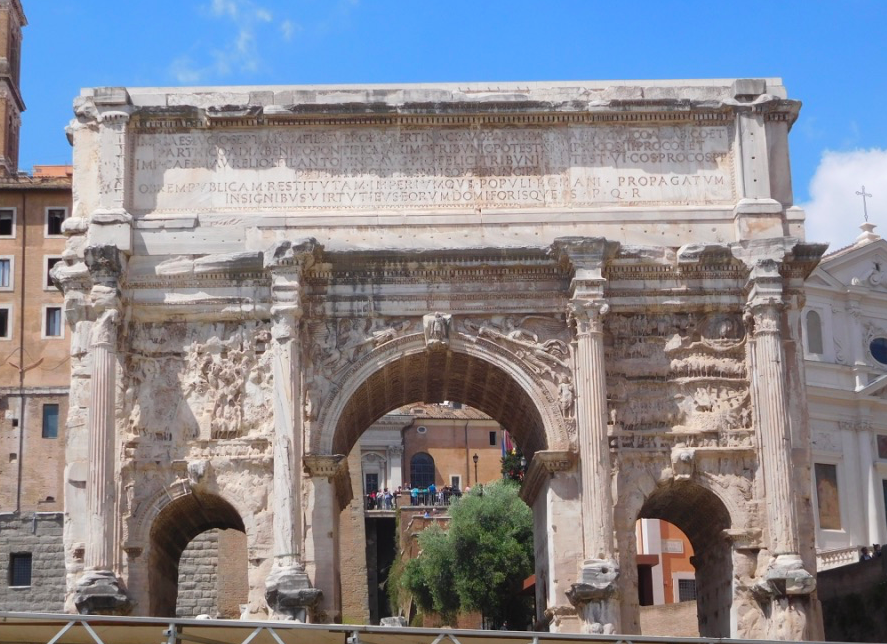
The remains of the Basilica Maxentius. "In ancient Rome a basilica was a rectangular building with a large central open space, and often a raised apse at the far end from the entrance. Basilicas served a variety of functions, including a combination of a court-house, council chamber and meeting hall." Later Christian churches took the same layout and name "basillica". In picture to the right, see Tim posing and dwarfed by it all.
Site of Julius Caesar's cremation.
After we took a slow lunch, we tried again at the Coliseum, and pretty much just walked right in (towards 5 pm).
Inside the Coliseum. The floor is removed, and all the under passageways are view-able from above.
The Romans completed this in only 8 years (72-80 AD).
The Romans completed this in only 8 years (72-80 AD).
Rick Steve's tour book information provided an interesting narrative of the events that took place here 2,000 years ago - it was amazing to stand from here and absorb the description.
An idea of how the floor looked during the Coliseum's heyday.
Along the upper rim.
Gerri demonstrating the massive scale of it all.
Day Three
Back to the Vatican for our visit of St Peter's Basilica, the Vatican Museum, and the Sistine Chapel. All these chairs are set up permanently for Pope Francis's Wednesday morning outside Mass service.
Inside the Basilica, near the Altar.
The Pietà by Michelangelo is in the north aisle. Created 1498-99.
Tomb of an earlier Pope - right now I can't determine who he was - for further investigation. Yeah, the clothing reminds me of Santa Claus.
The Sistine Chapel - the Pope's personal chapel, containing Michelangelo's masterpiece ceiling fresco - site where the Cardinal's meet to determine a new Pope. Along the roof line is a chimney top where smoke signals indicate the status of the proceedings - only the base is there now, as apparently they add the top when needed - it's the grayish nub down the left from the end cupula, directly above the false looking side window (a feint vertical shadowy line leads you from the false window to the chimney base).
Our selfie, at the edge of the square, getting a better view of the dome.
"Fontana dei Quattro Fiumi (Fountain of the Four Rivers) is a fountain in the Piazza Navona, designed in 1651 by Gian Lorenzo Bernini for Pope Innocent X. The base of the fountain is a basin from the center of which travertine rocks rise to support four river gods and above them, an ancient Egyptian obelisk surmounted with the Pamphili family emblem of a dove with an olive twig. Collectively, they represent four major rivers of the four continents through which papal authority had spread: the Nile representing Africa, the Danube representing Europe, the Ganges representing Asia, and the Río de la Plata representing the Americas."
The Pantheon - awesome, and totally free to get inside. Roman temple from 128 AD. Almost two thousand years after it was built, the Pantheon's dome is still the world's largest unreinforced concrete dome
The 18th century Trevi Fountain. One of the most famous fountains in the world, the fountain has appeared in several notable films, including the eponymous Three Coins in the Fountain.
When a coin is thrown over your back, you're sure to return to Rome. It supposed to be thrown from your right hand over your left shoulder - I tweaked it up because I think we've seen enough of Rome for a lifetime (those crowds, ugh).
Scenes from Rome.
Day Four
Back one last time to the Vatican, for a tour of the Museum and interior of the Sistine Chapel. It's a good thing our apartment location was fairly close-by, although the subway system in Rome worked great for the other sites.
Michelangelo's Sistine Chapel ceiling - photos were not permitted, so this is an assemblage of photos as posted on the web. What an amazing piece of work.
From the central part - God created man.
We then took the subway across town to see some nighttime views.
The Roman Forum at night.
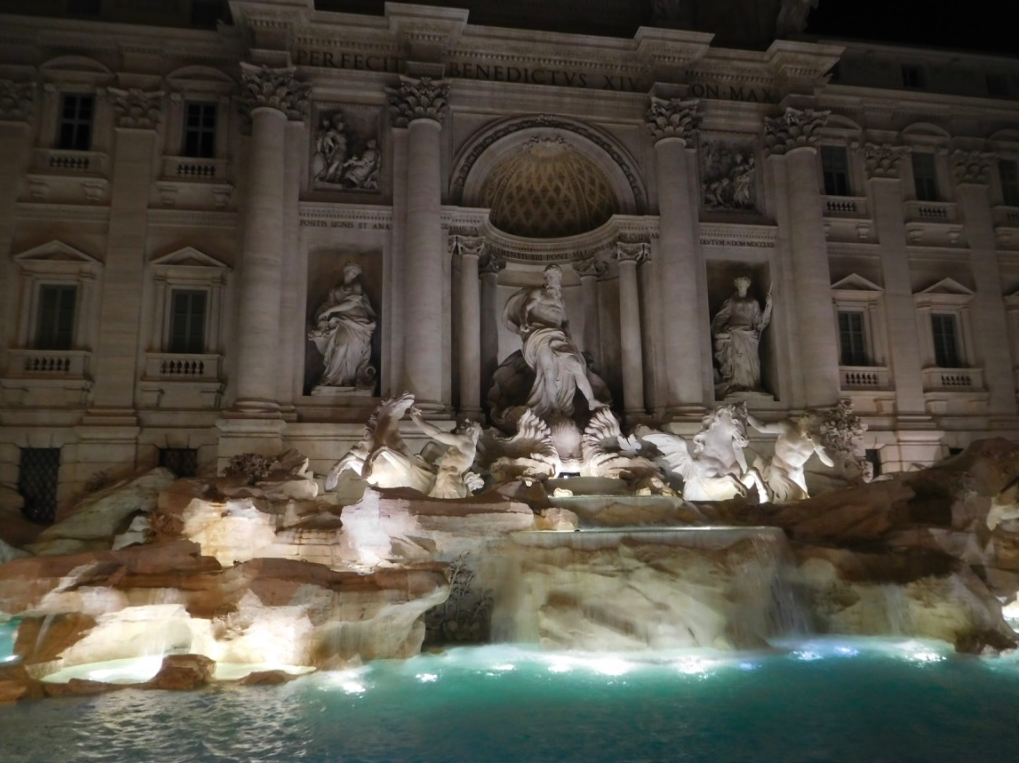
Trevi Fountain.
Day Five
Our last full day in Rome - a tour of the Borghese Gallery. The Galleria Borghese houses a substantial part of the Borghese collection of paintings, sculpture and antiquities, begun by Cardinal Scipione Borghese, the nephew of Pope Paul V (reign 1605–1621).
On the way to the tour of the Jewish Ghetto, a Roman theater - complete with surviving apartments still atop it.
From our experiences all over Italy, it seemed cable TV wasn't in use - however, broadcast HD to antennas seemed to work quite well.
The Jewish Ghetto - this was a short Rick Steves' narrated tour of some the history of the Jewish experience in Rome. This plaque on the wall commemorates the event of Nazis taking Jewish people from this square in Rome.
"On 13 April 1986, Pope John Paul II made an unexpected visit to the Great Synagogue (shown below). This event marked the first known visit by a Pope to a synagogue since the early history of the Roman Catholic Church. This was seen as an attempt to improve relations between Catholicism and Judaism and a part of Pope John Paul II's programme to improve relations with Jews. Pope Francis visited the synagogue on 17 January 2016."
There were many many churches across Rome - if the door was open, we usually walked in.
“We were what you are…you will become what we are now.” Many churches we have visited are adorned with skulls, crossbones, even the grim reaper. Apparently the message is "your time on Earth is limited, make the most of it". More of that what Rick Steve's calls "in your face teaching through visuals".
Cool floor mosaics - graphics created from small stones, some tiny, of various colors.
Tim lit the candle on the first left - 0.50 Euro donation.
Bridge over the river Tiber.
The party is over in Rome...
Time to leave this amazing and inspiring old city...
Actually this is how we left. Our first train ride in Europe. Riding about an hour to Orvieto, for a visit and to get our new rental car (turned out to be a gem, a Fiat 500X, turbo diesel, 6-speed).

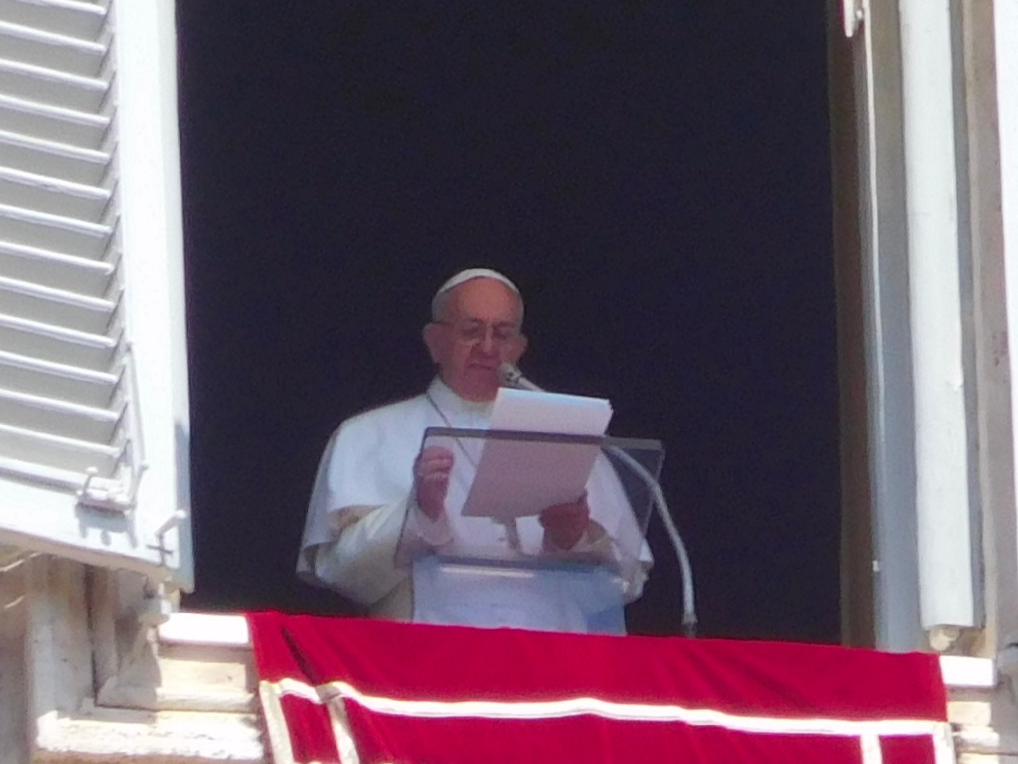
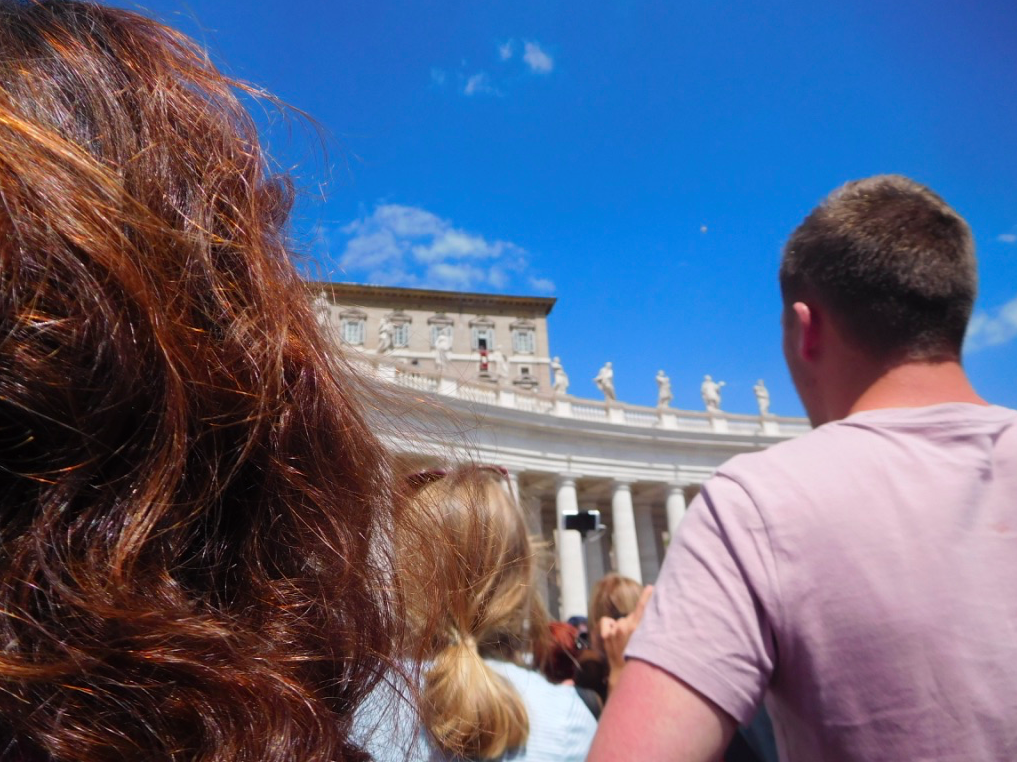
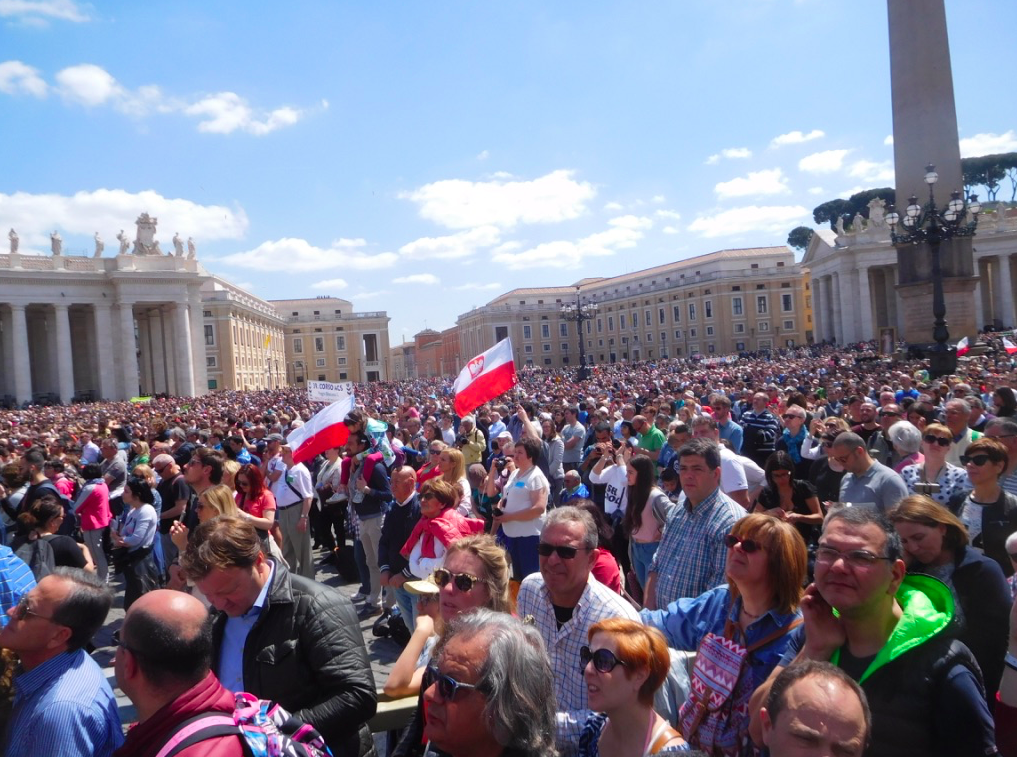
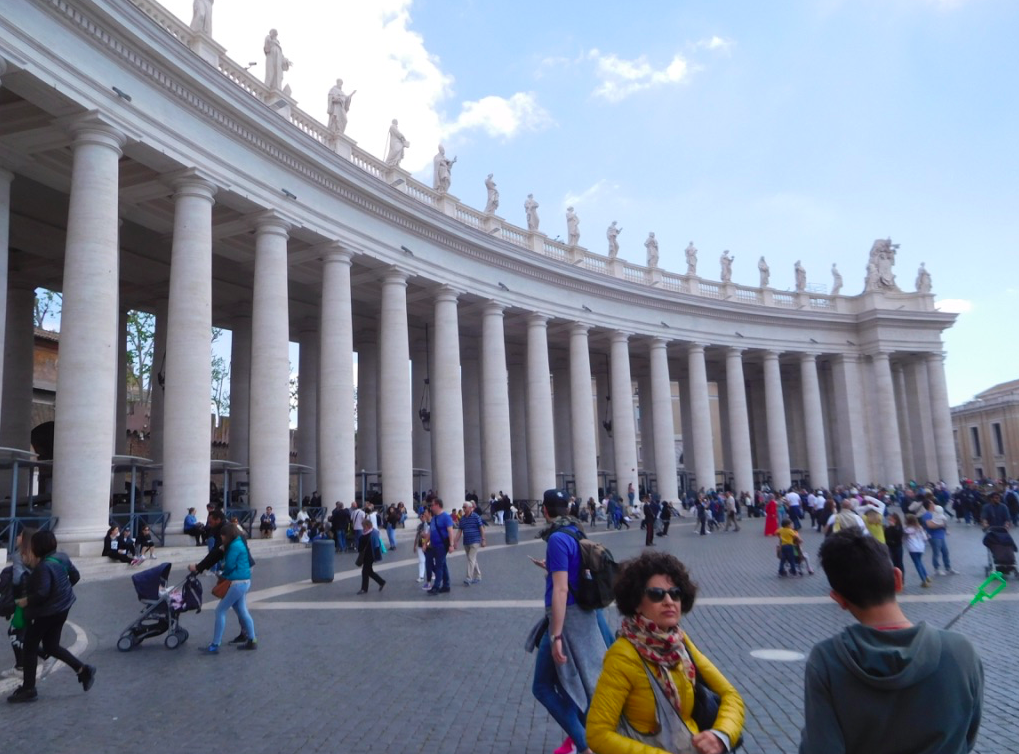
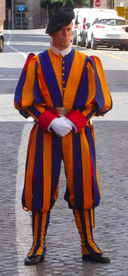
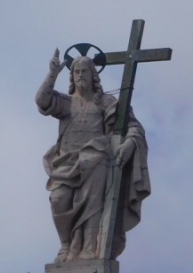
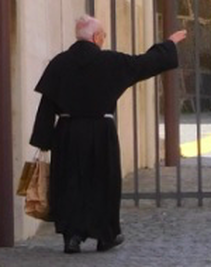

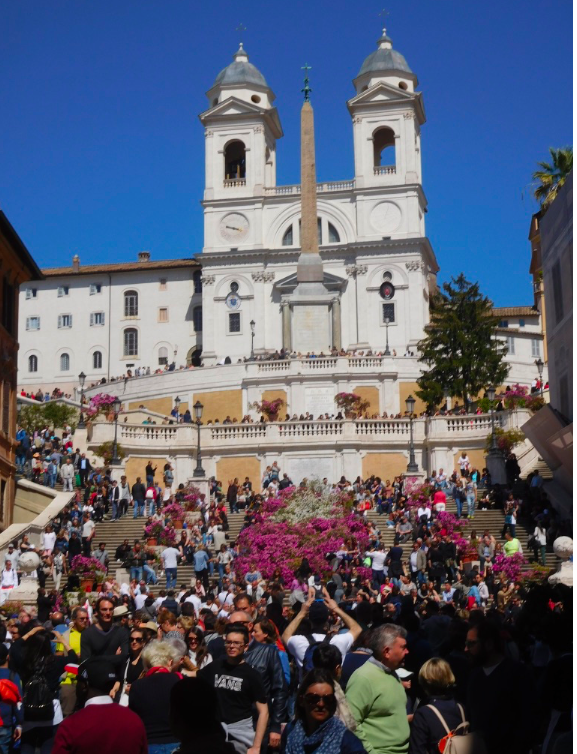
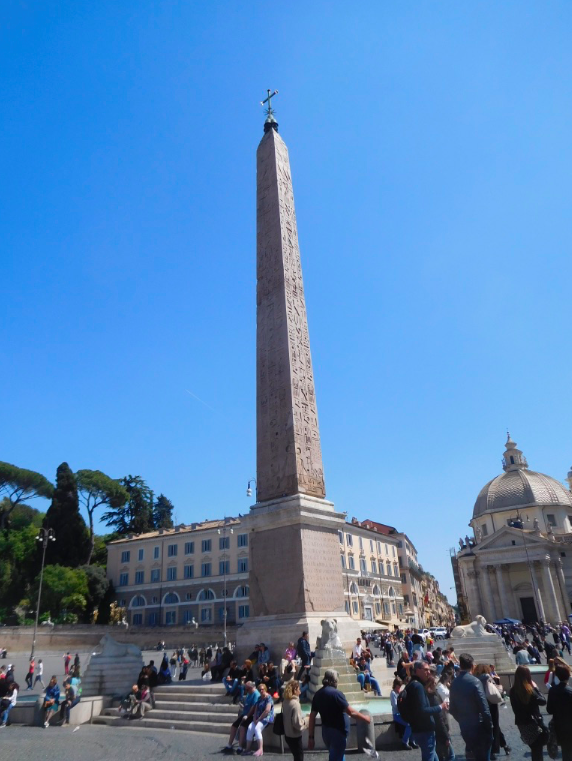
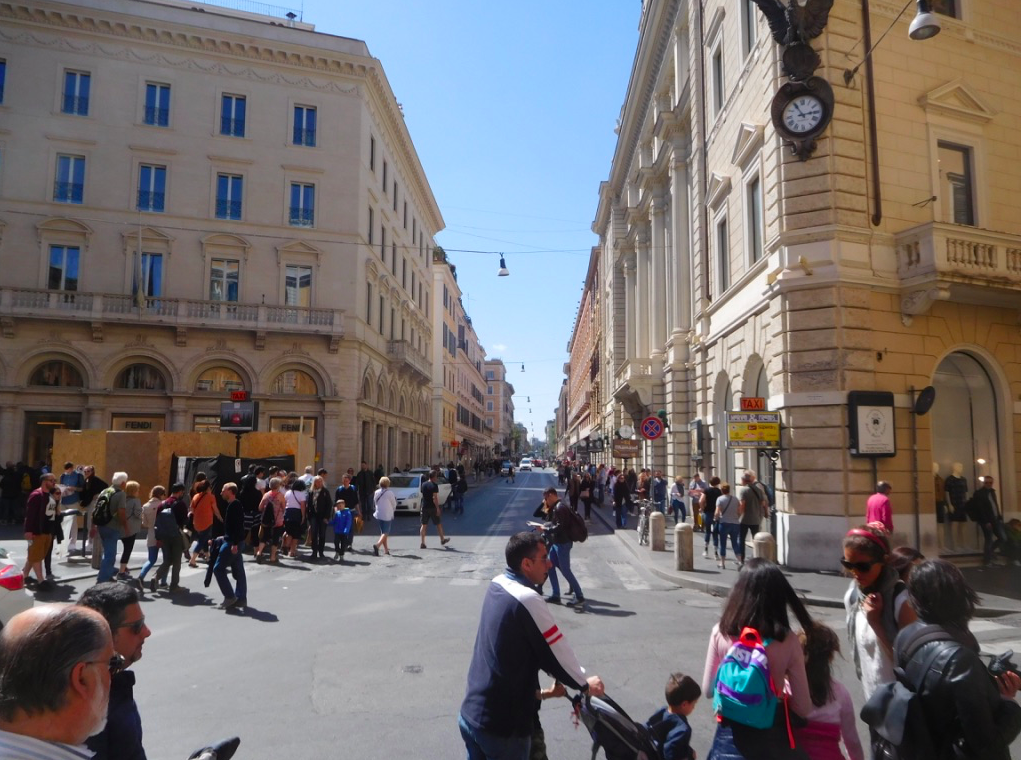

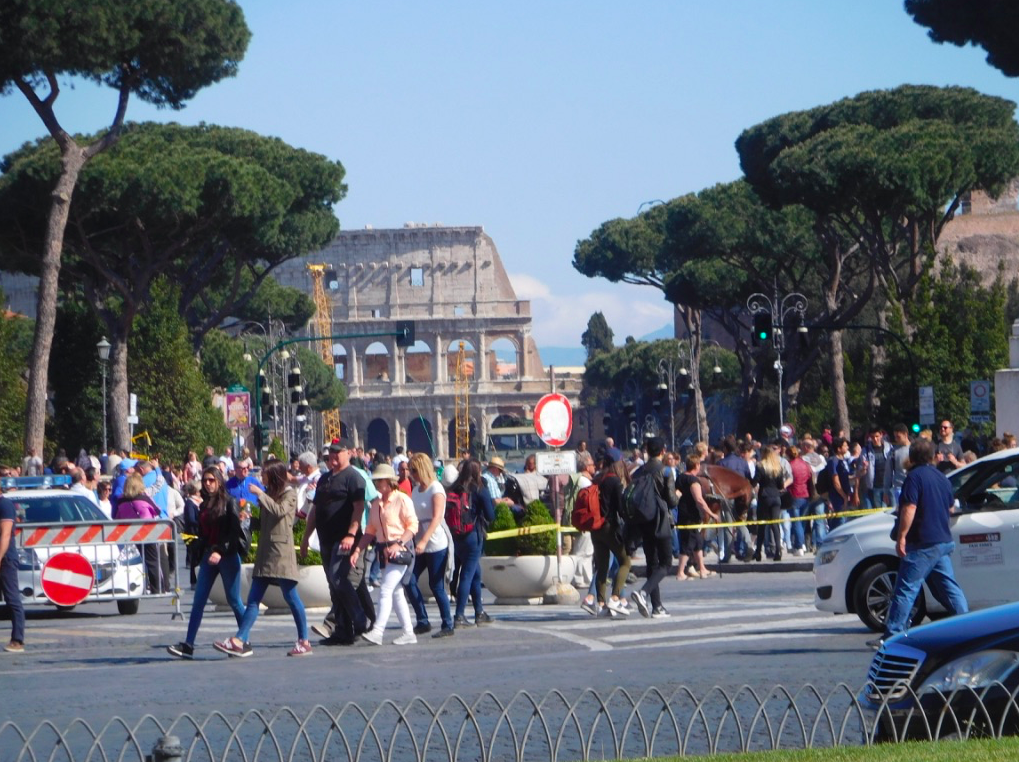
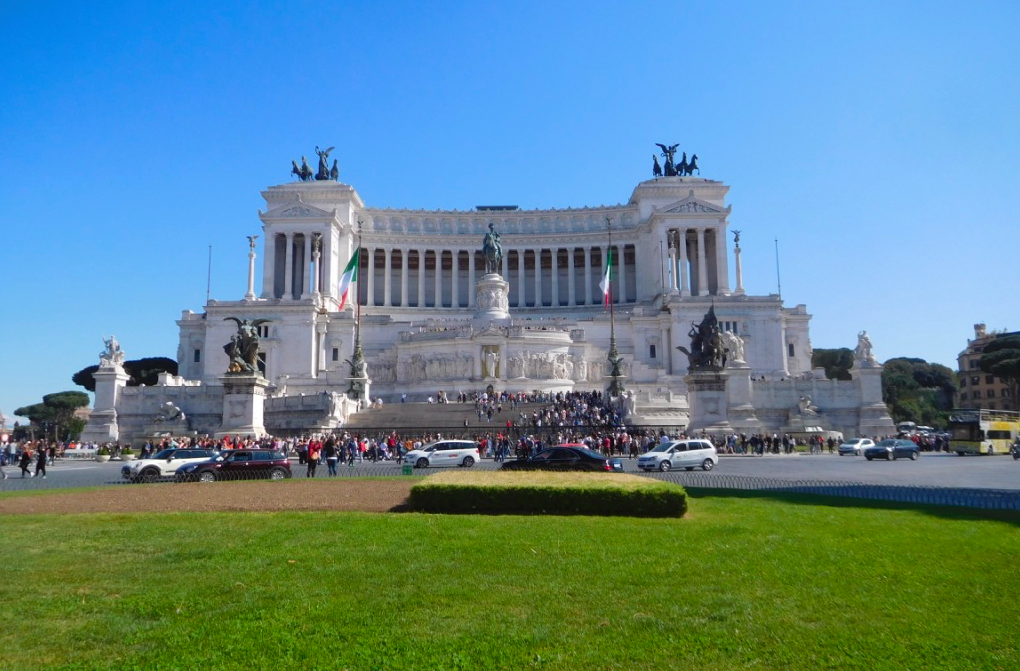
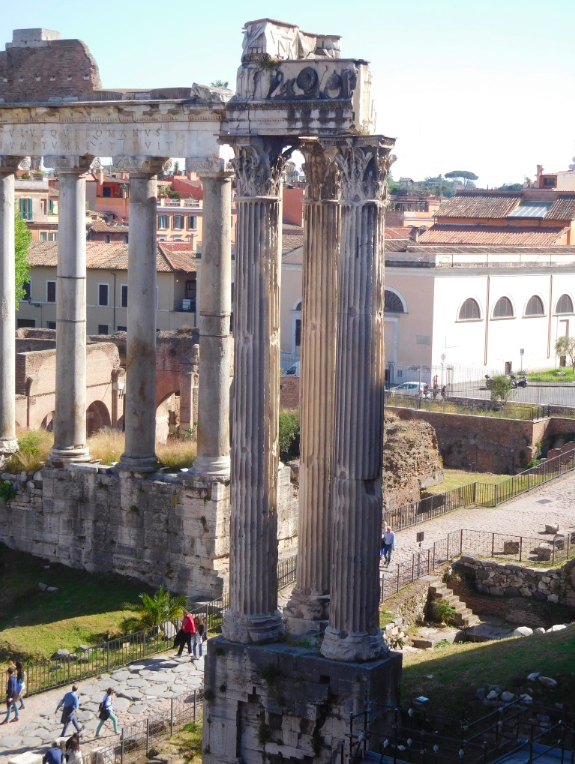
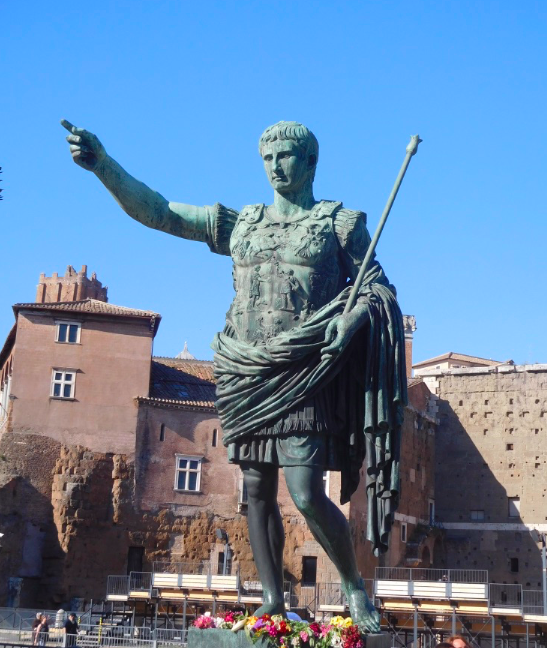
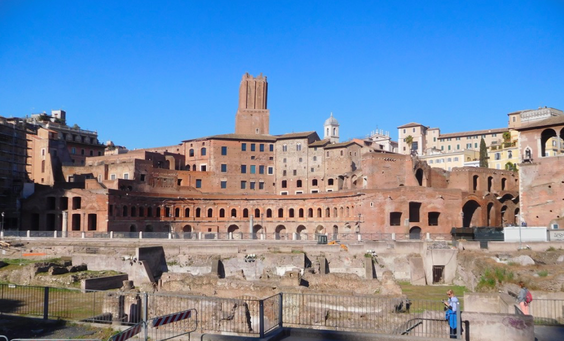
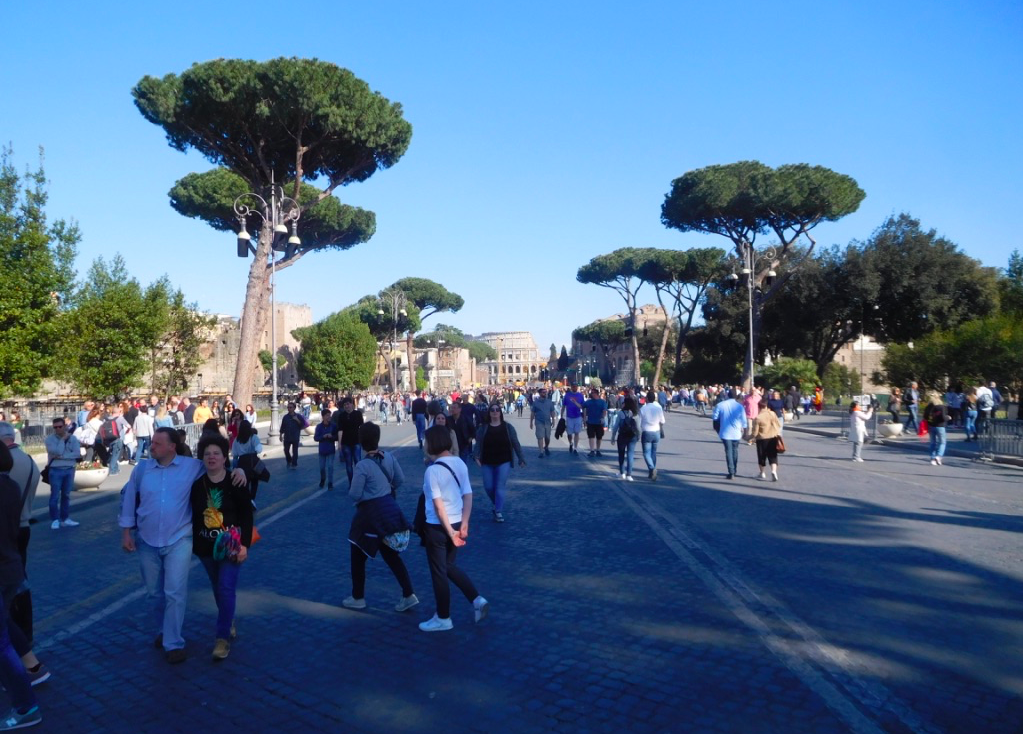



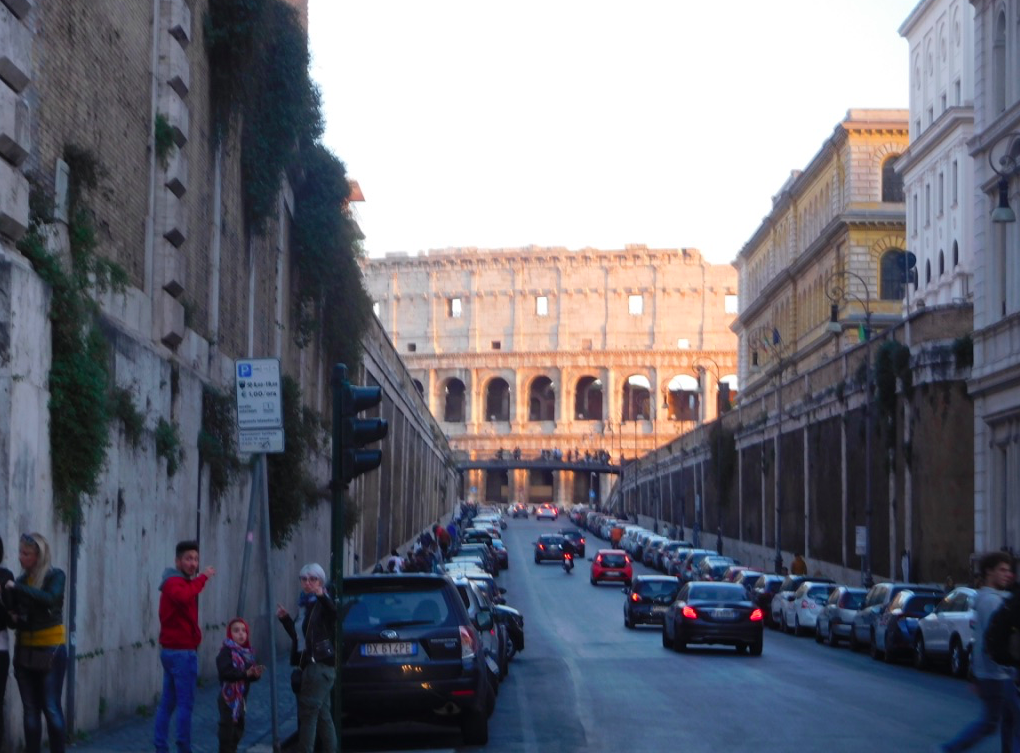
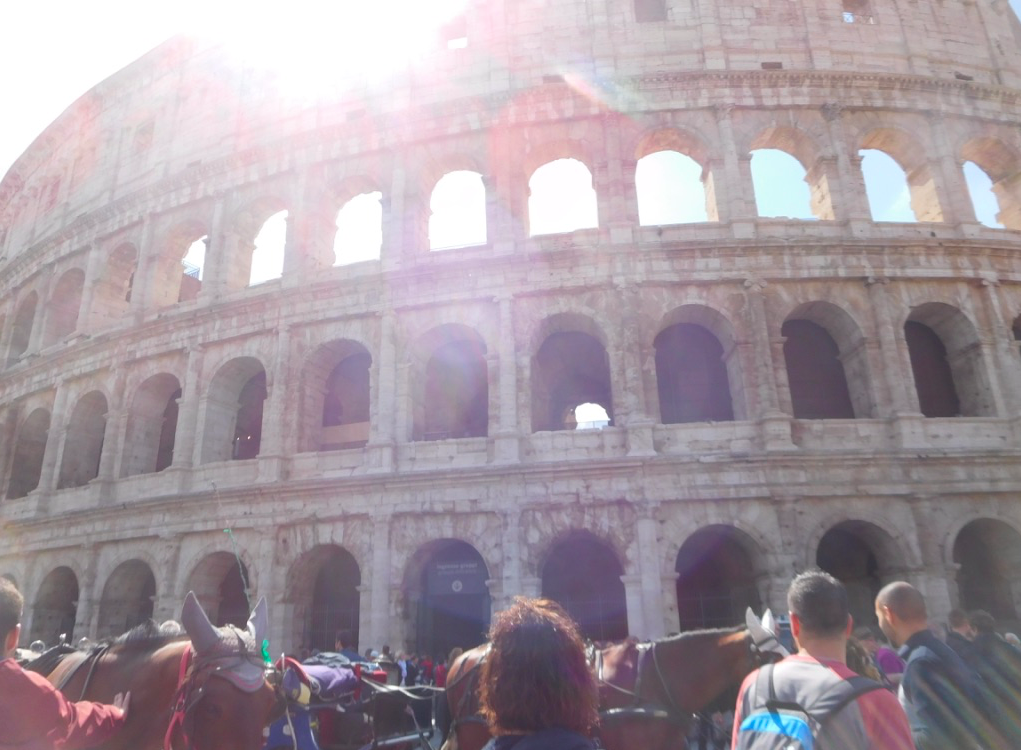
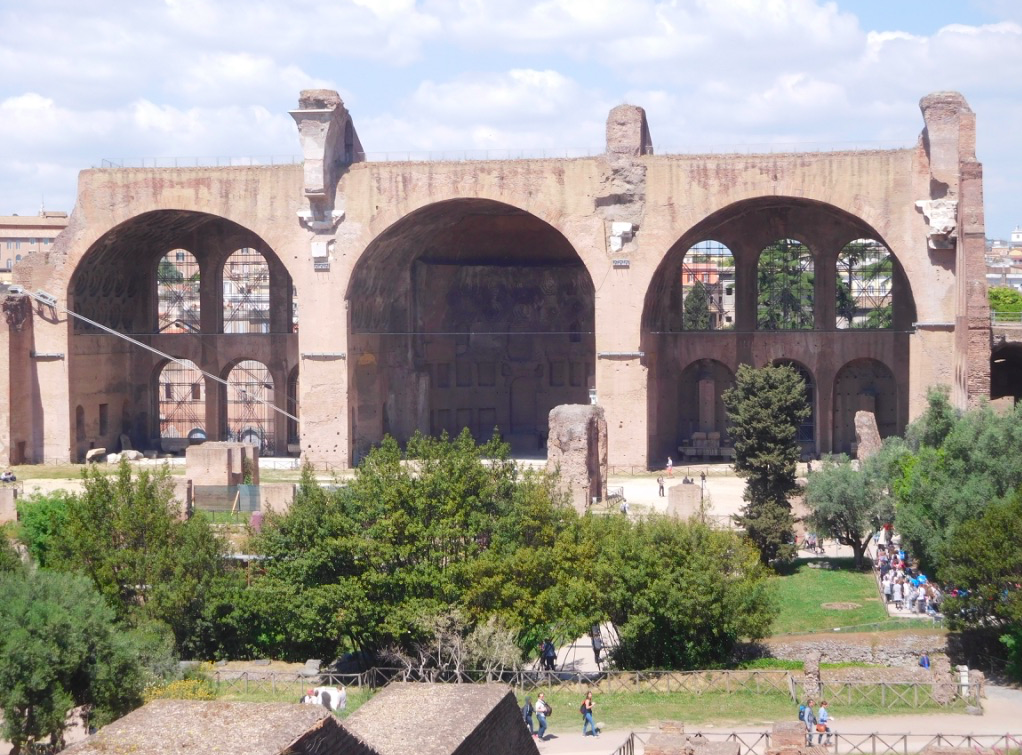
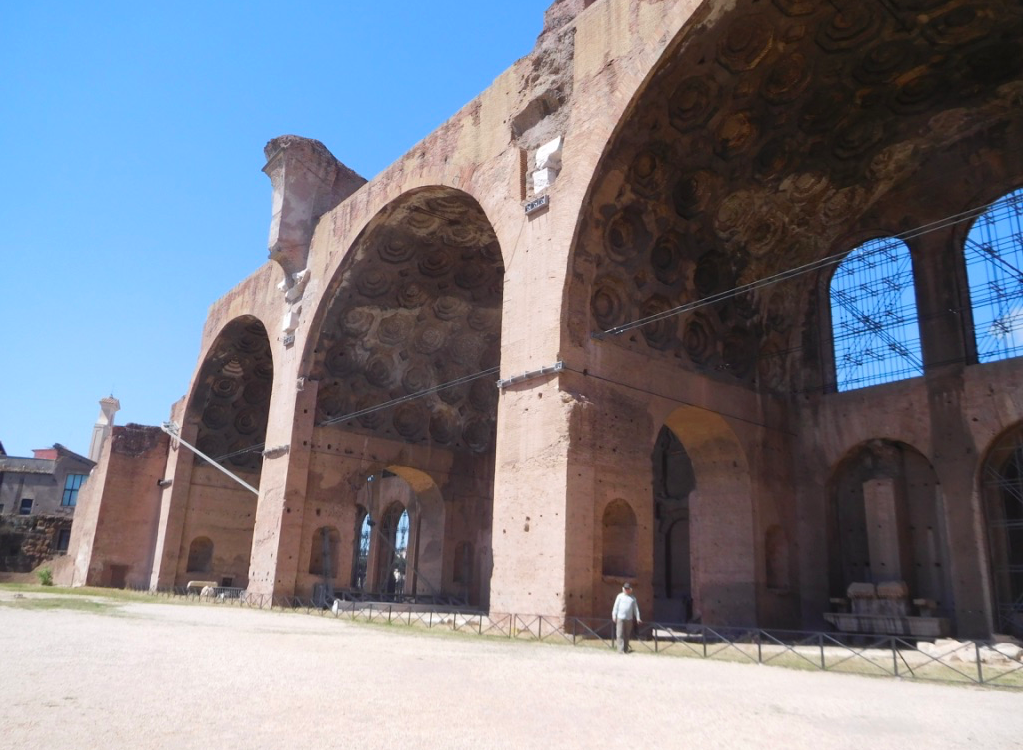
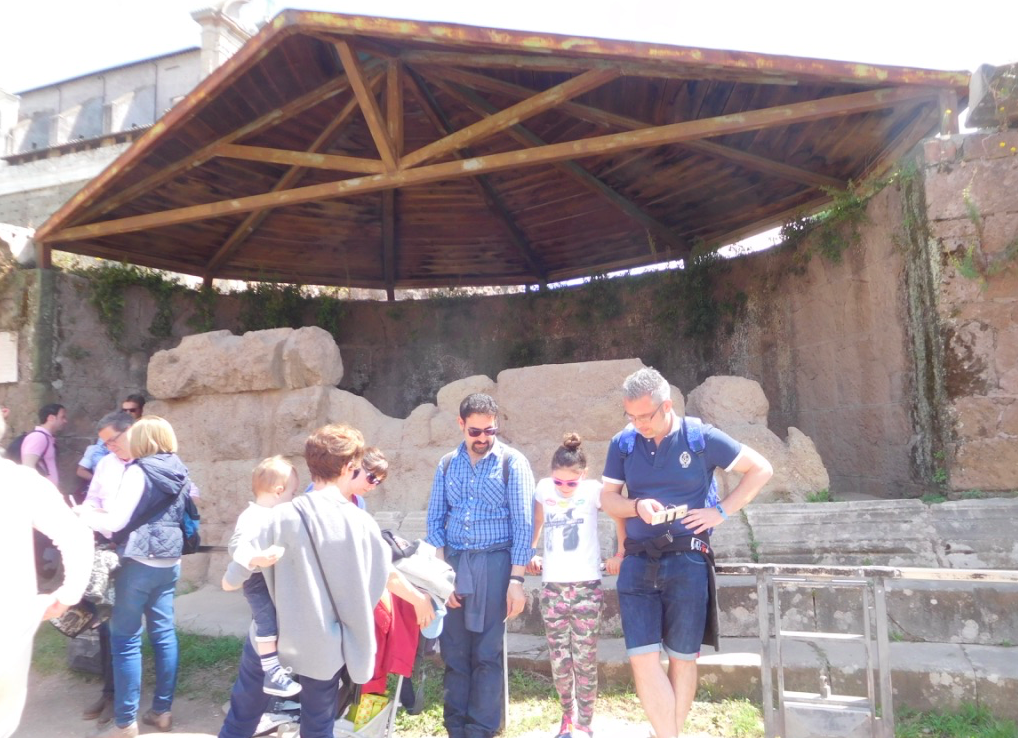
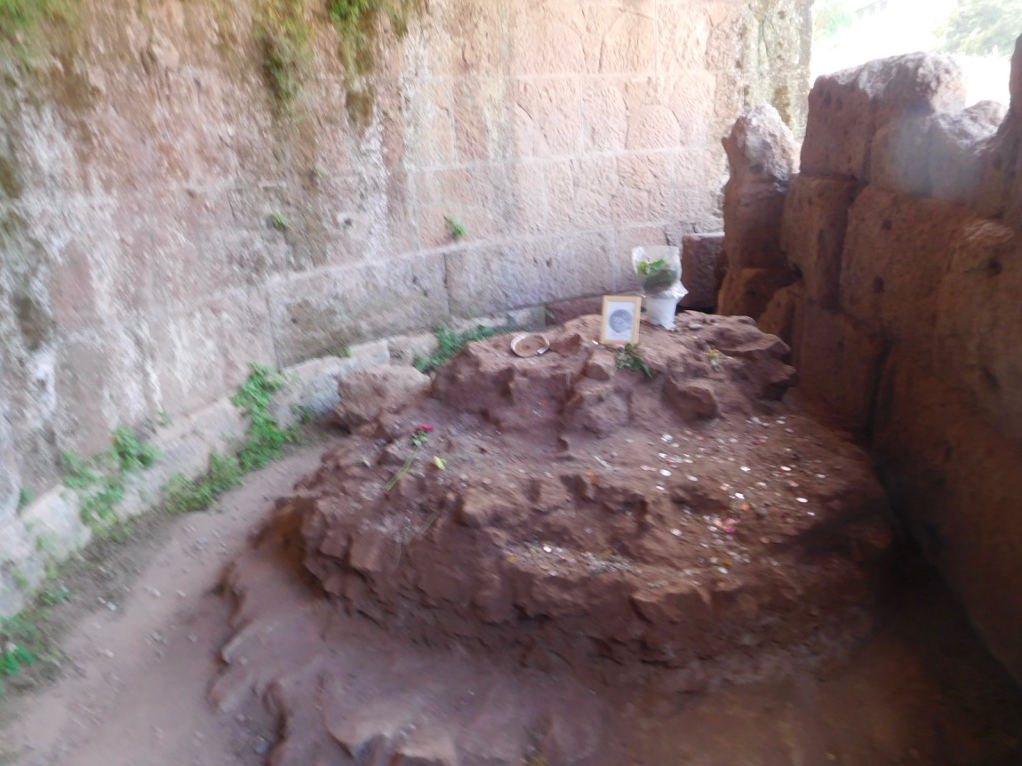
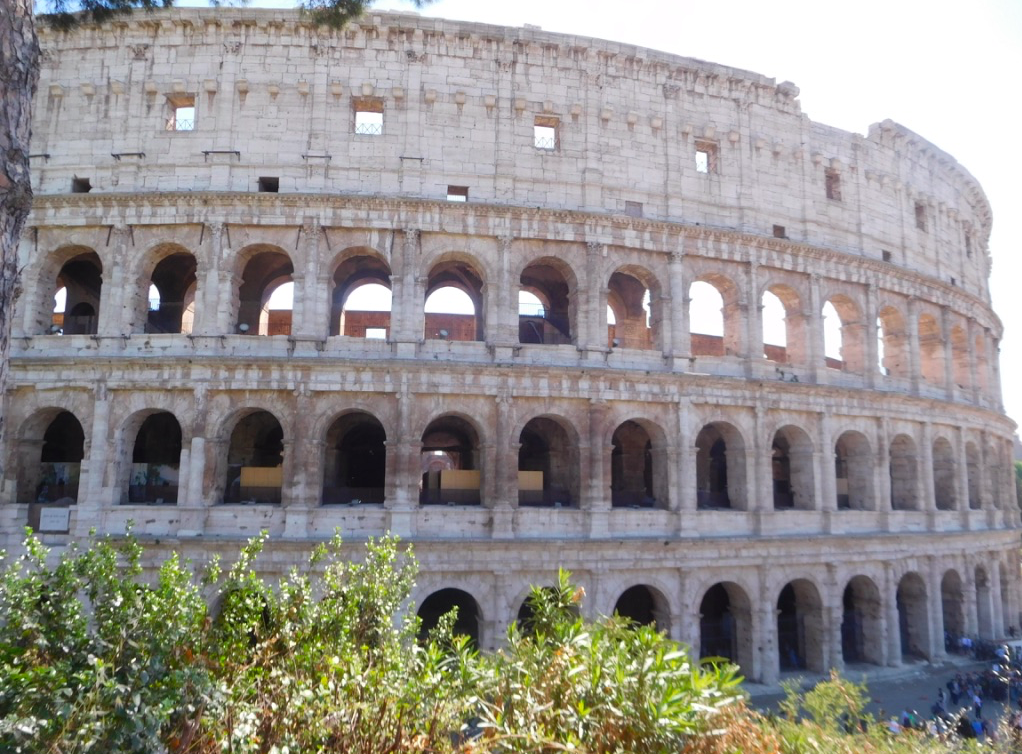
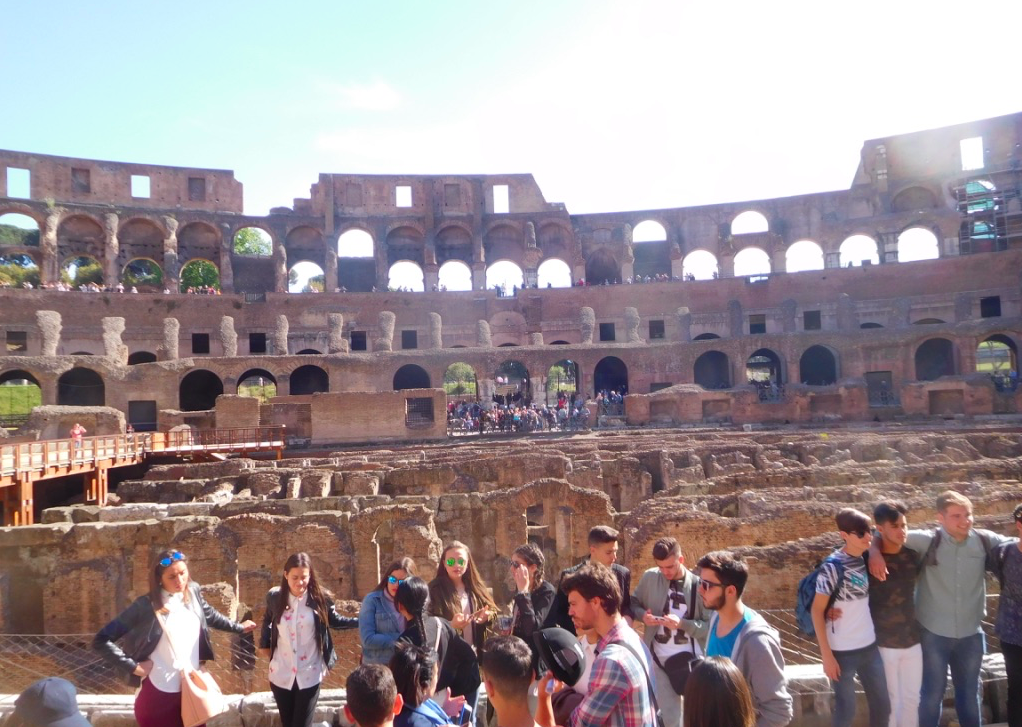
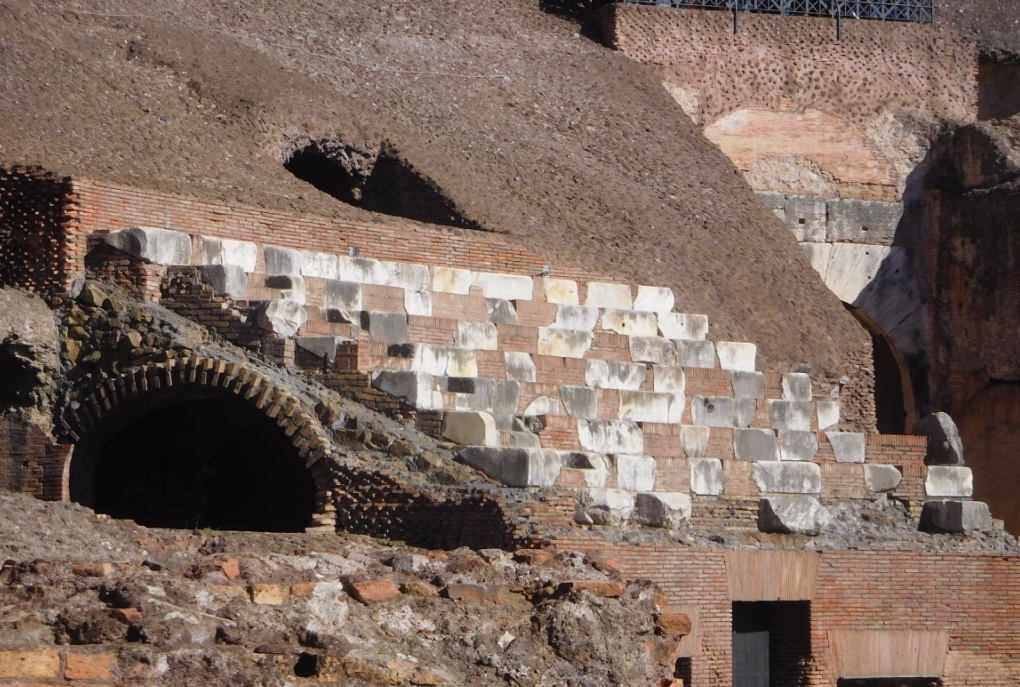
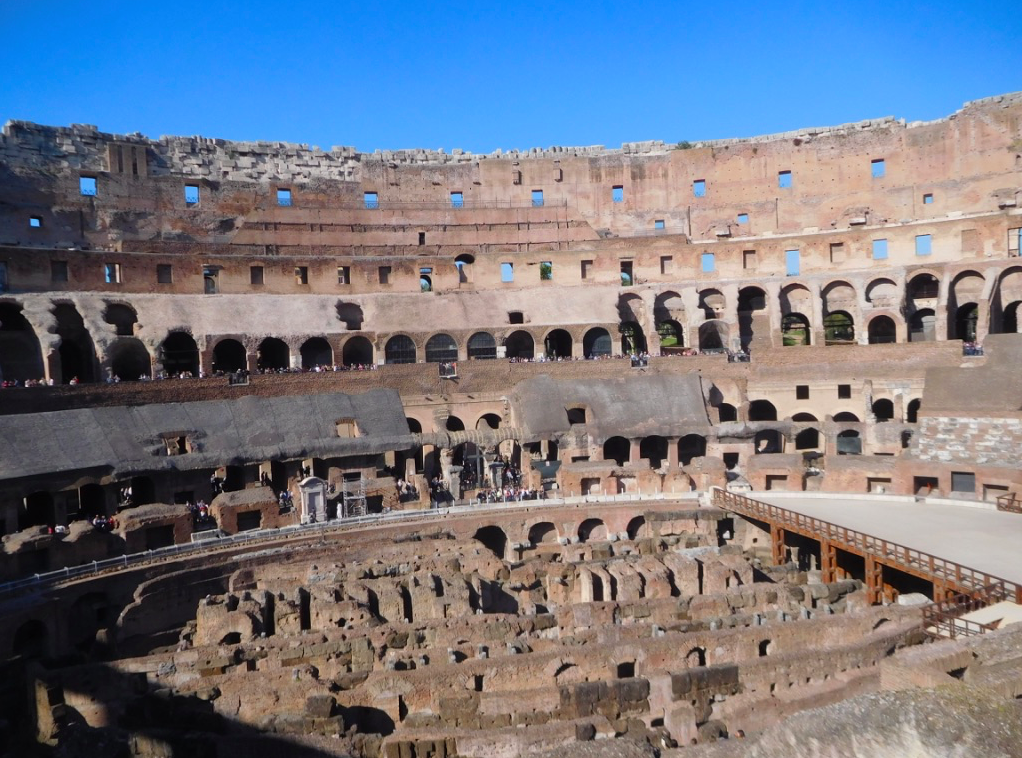
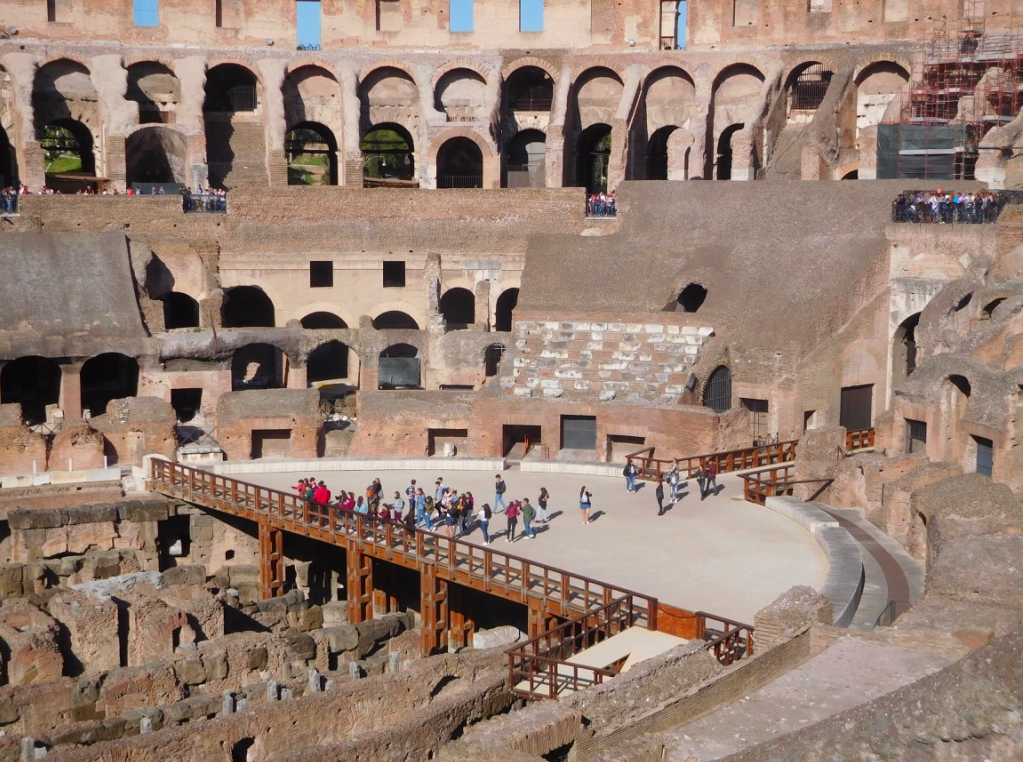
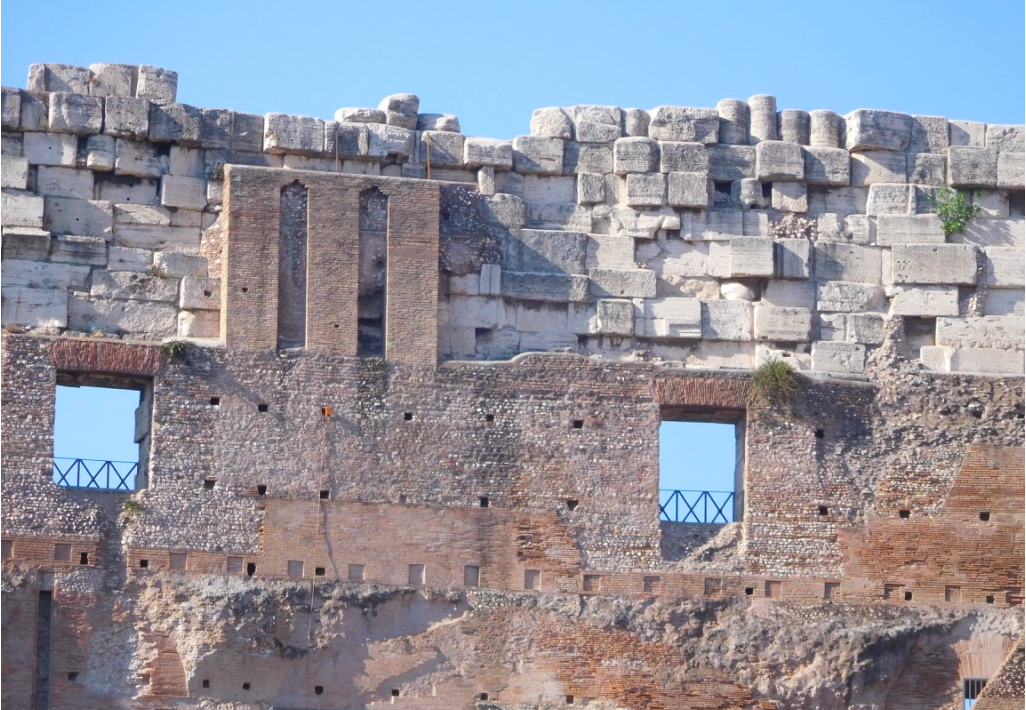
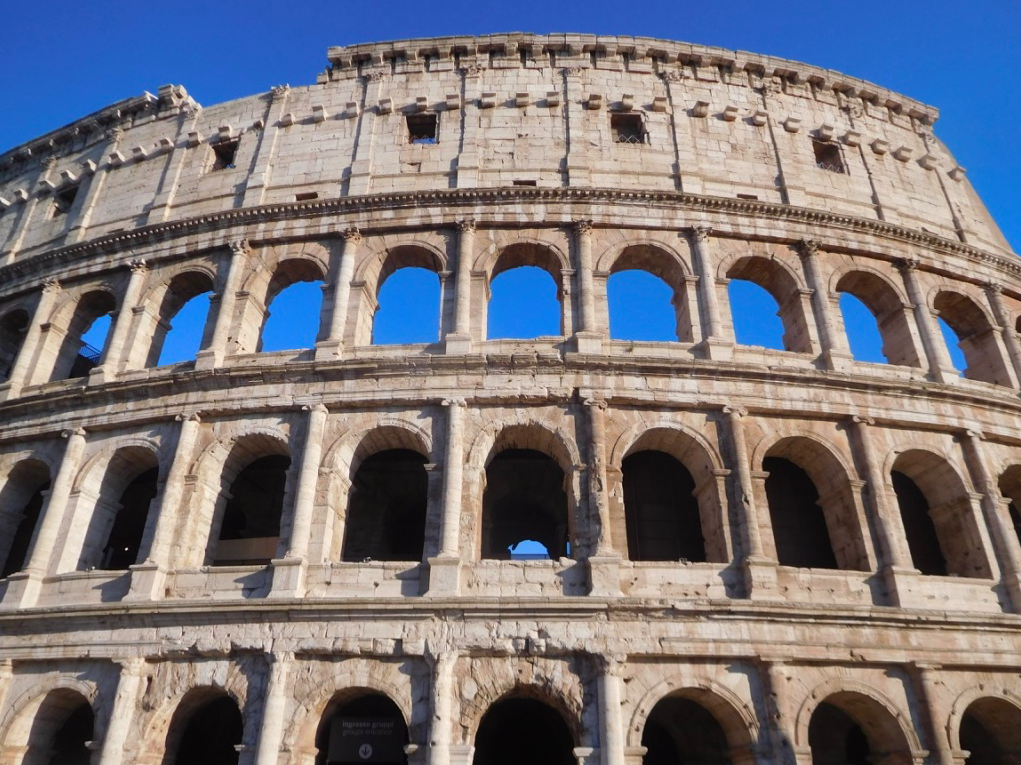
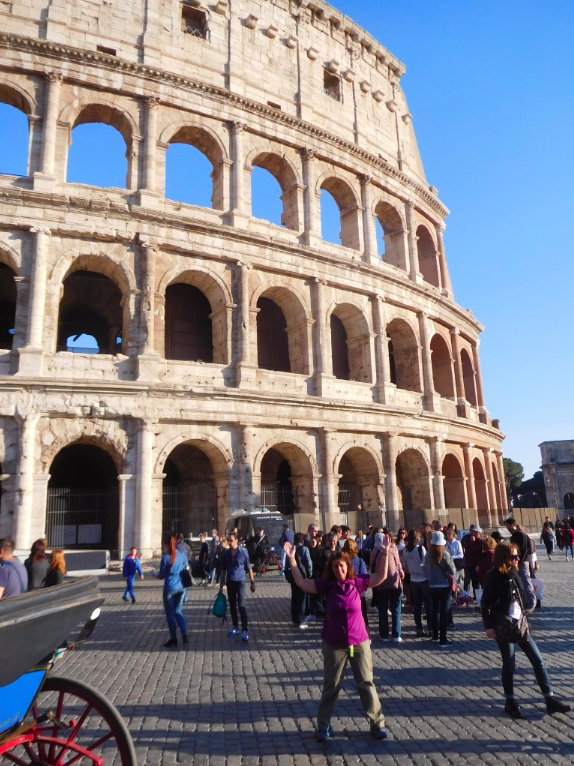
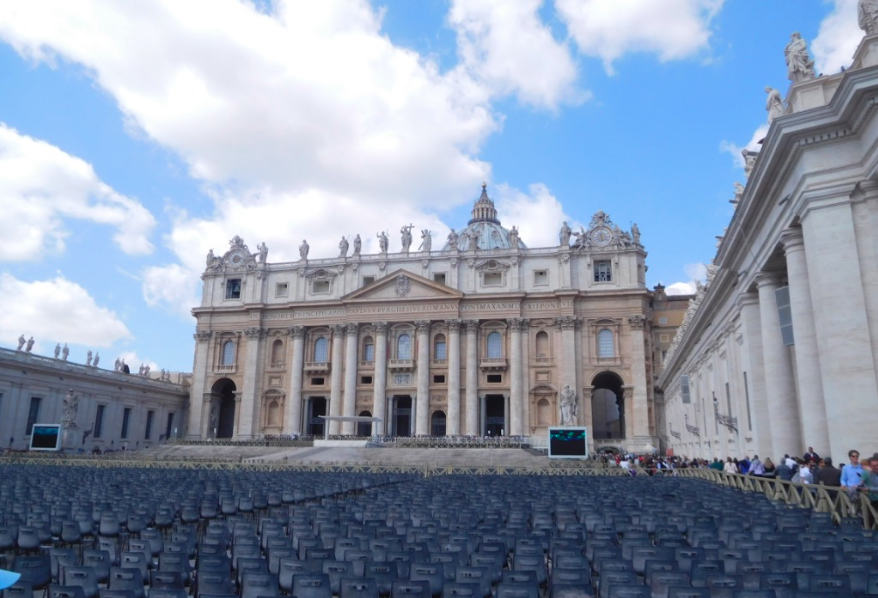
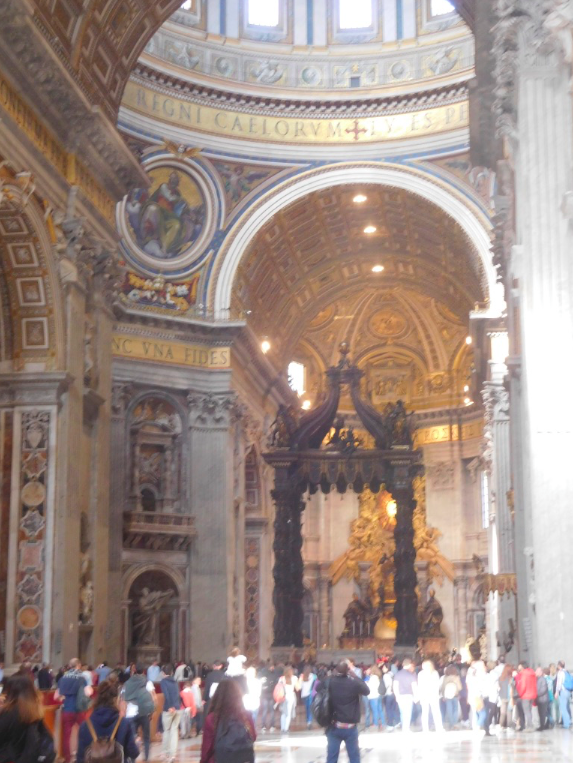
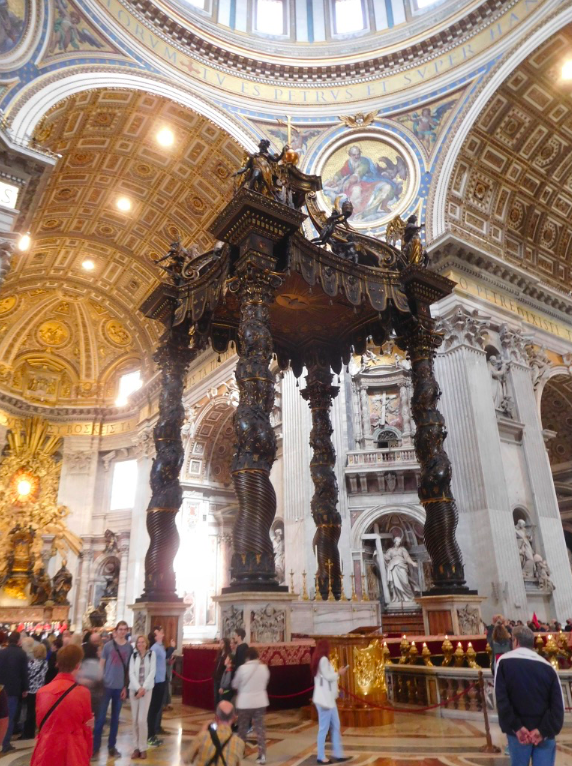
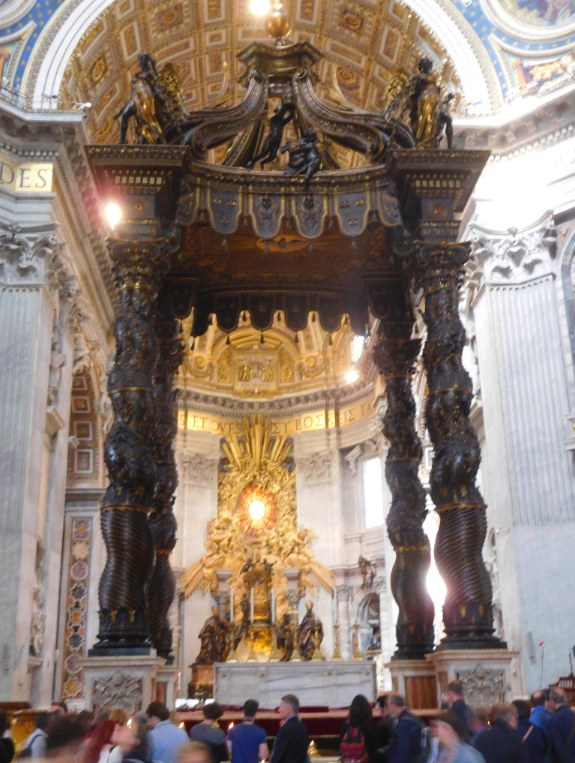
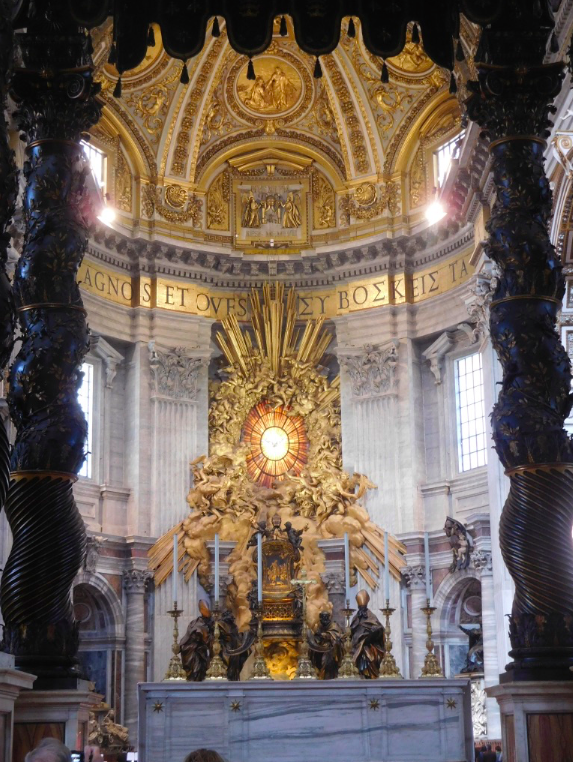
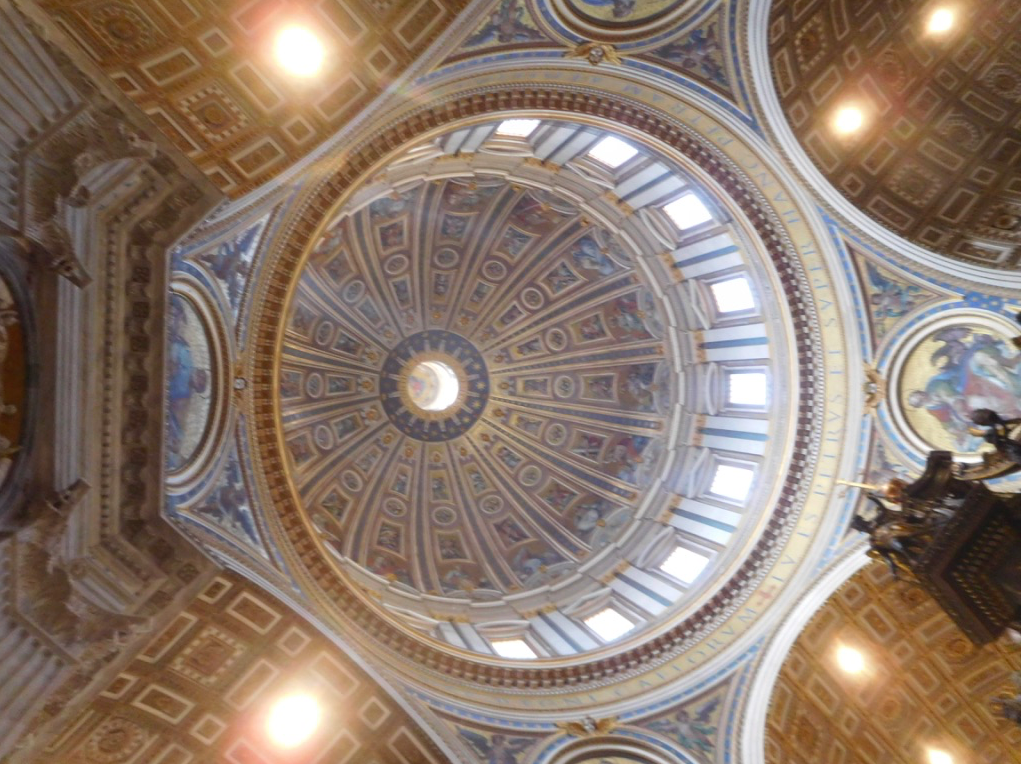
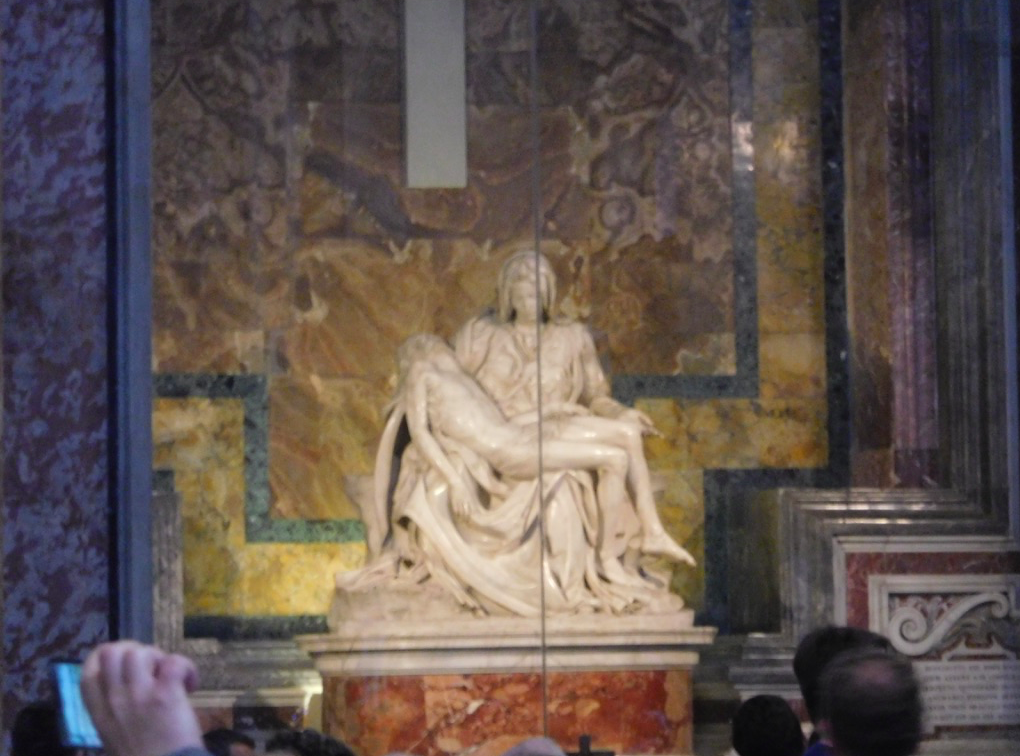
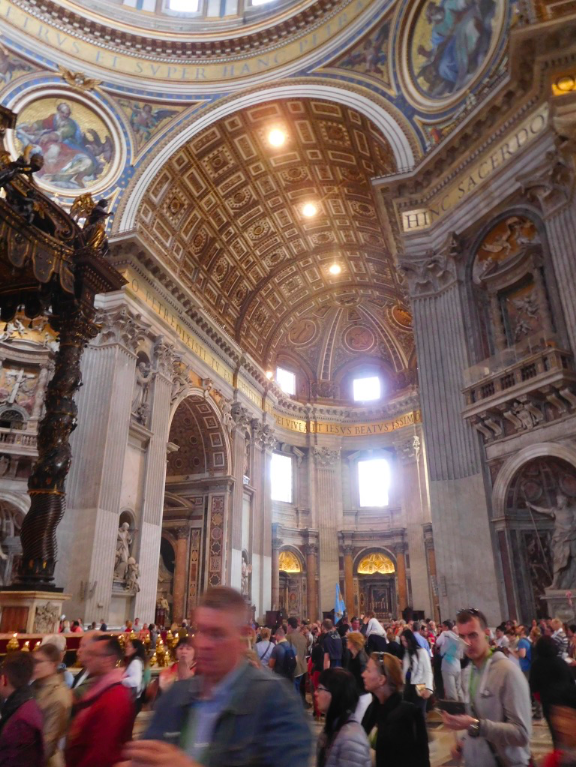
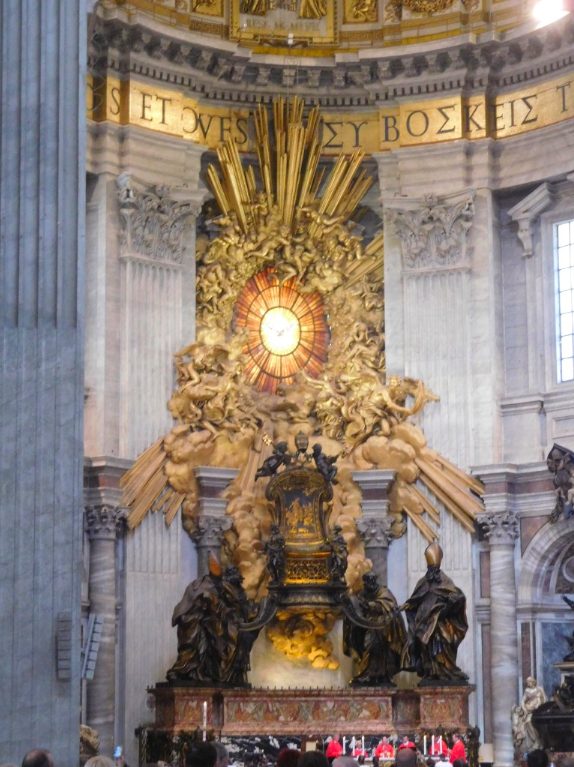
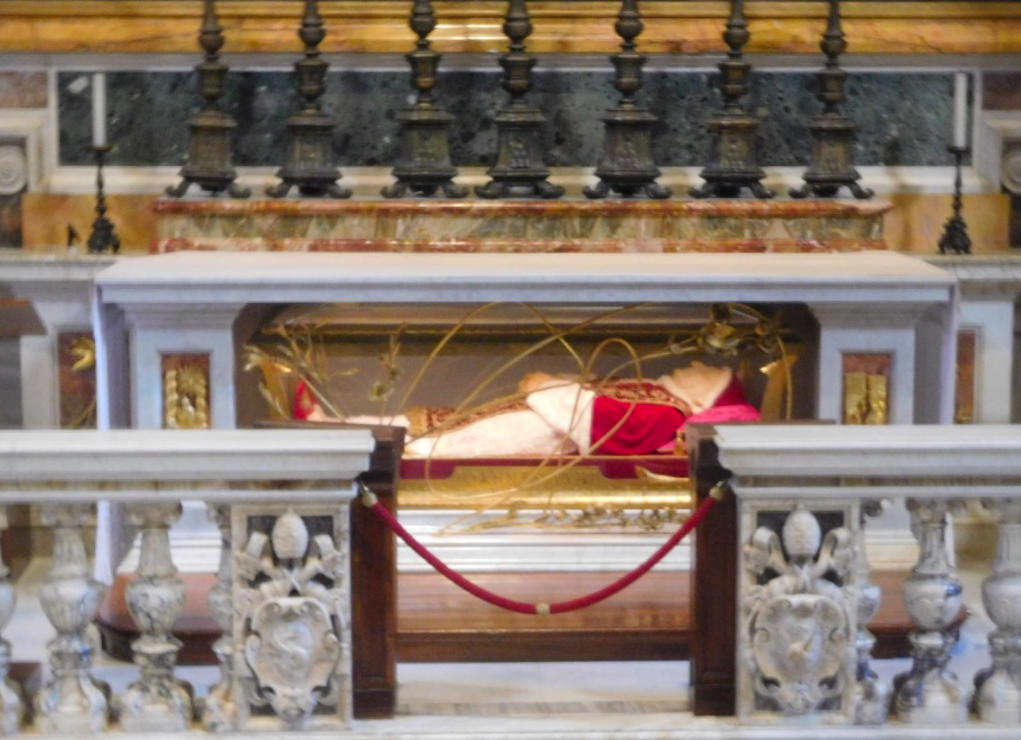
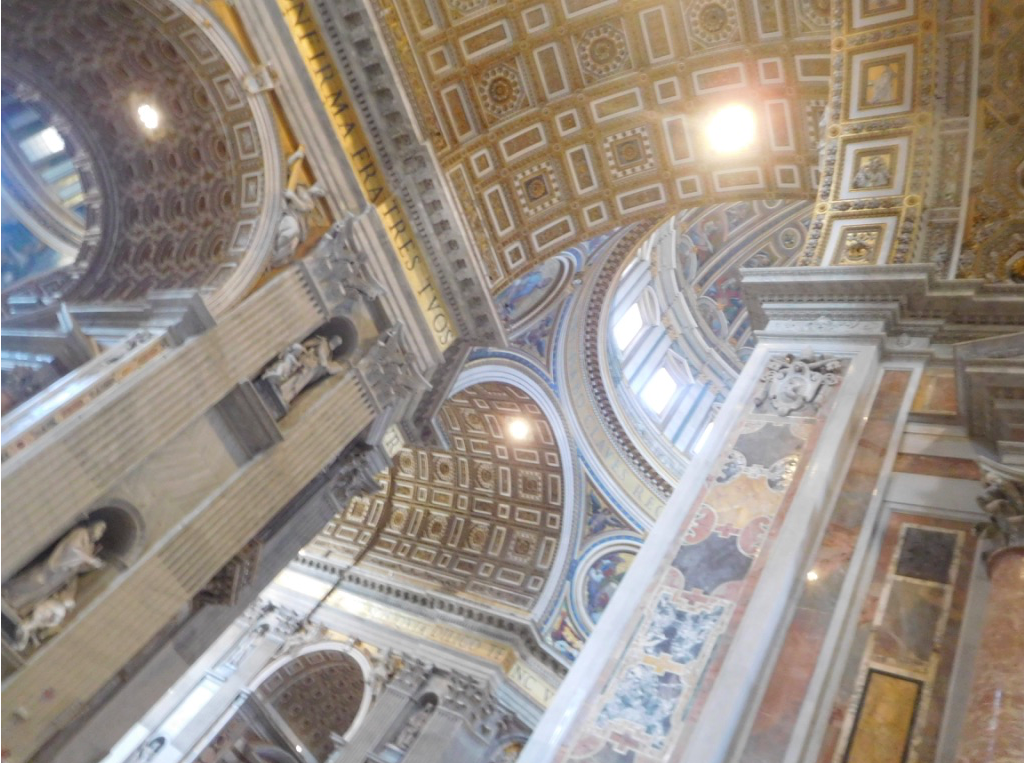
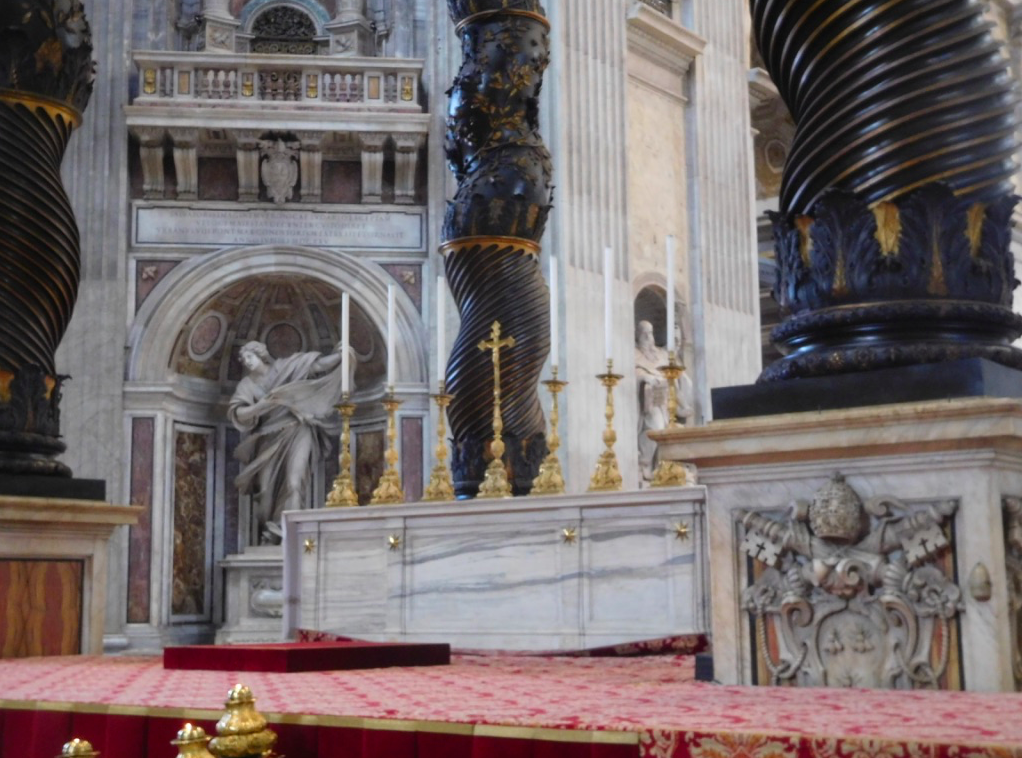
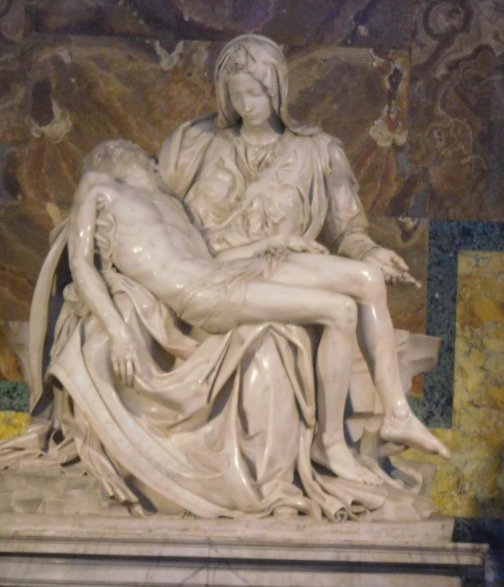
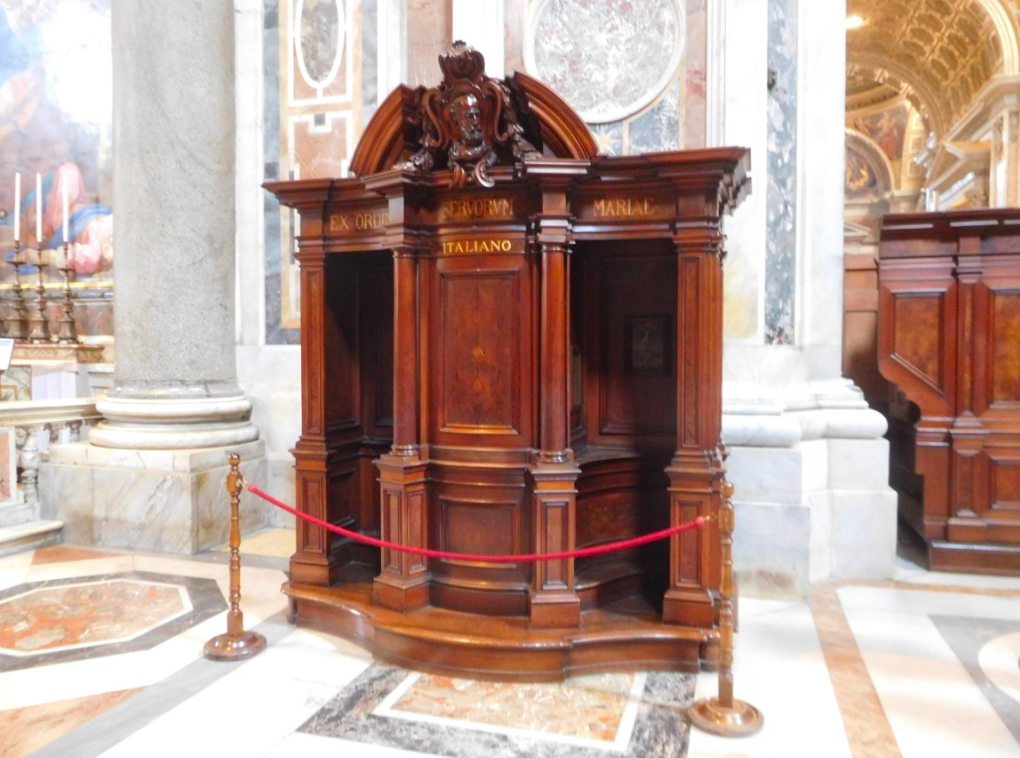
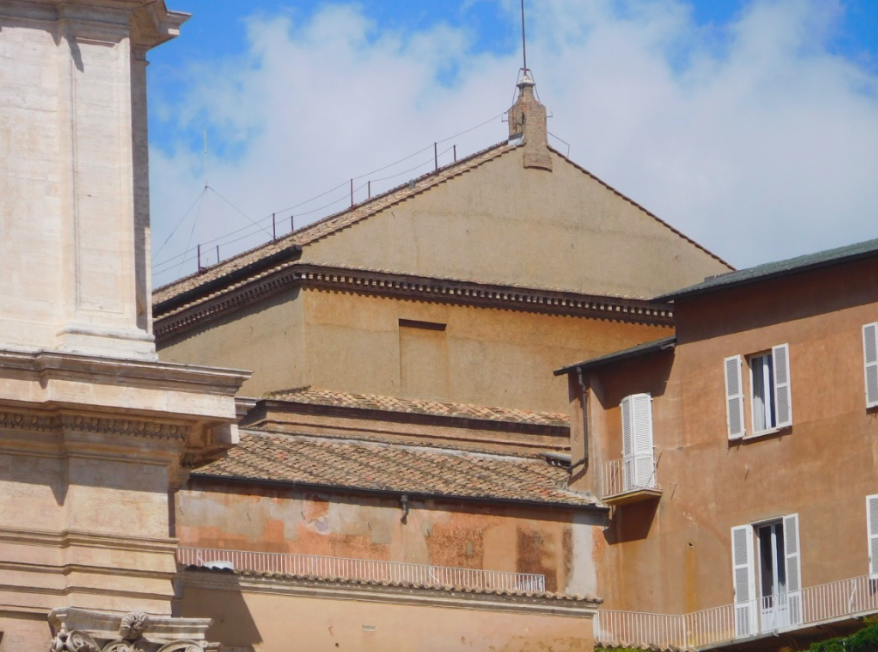
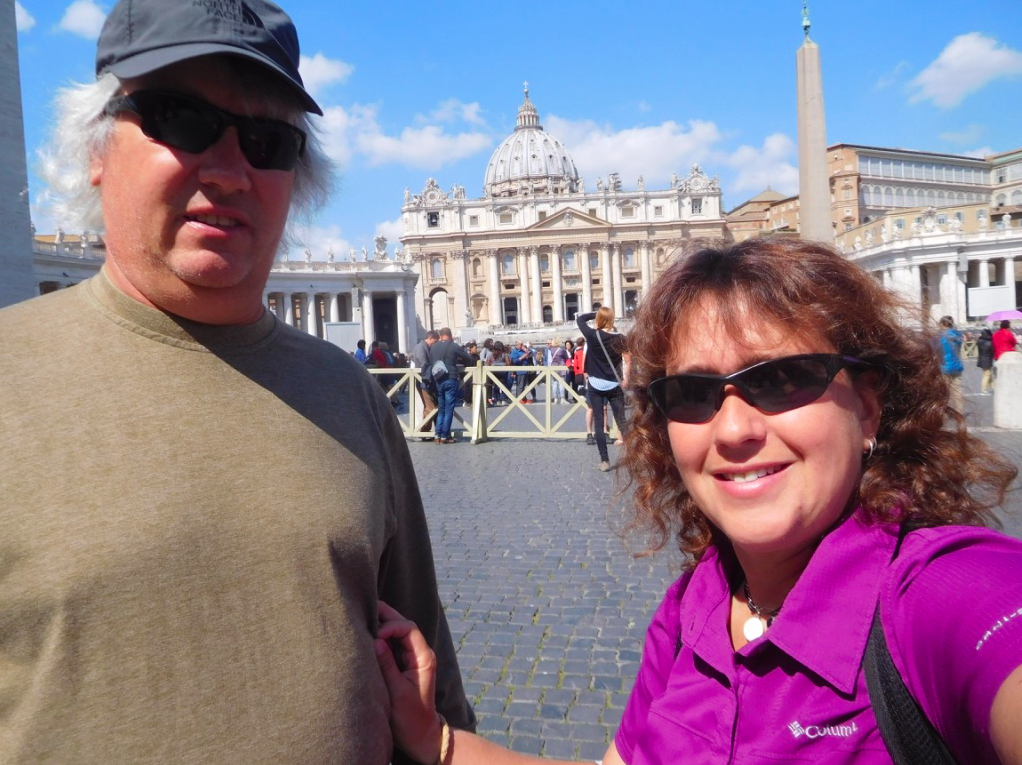
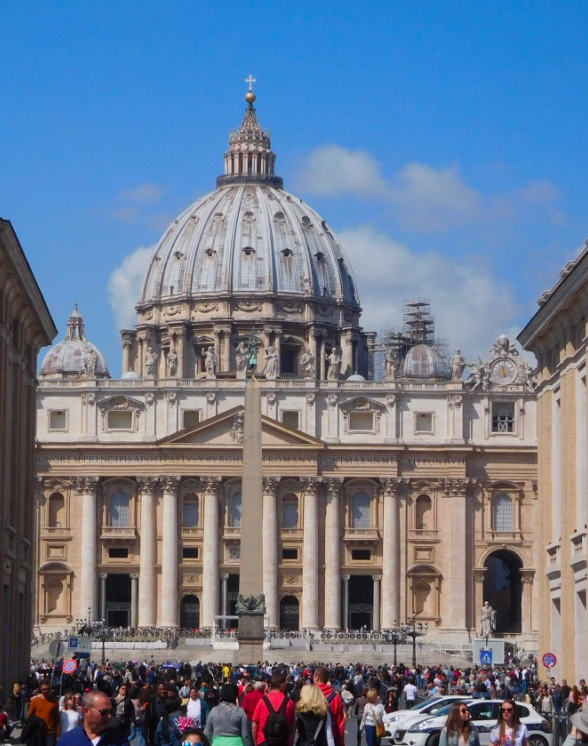
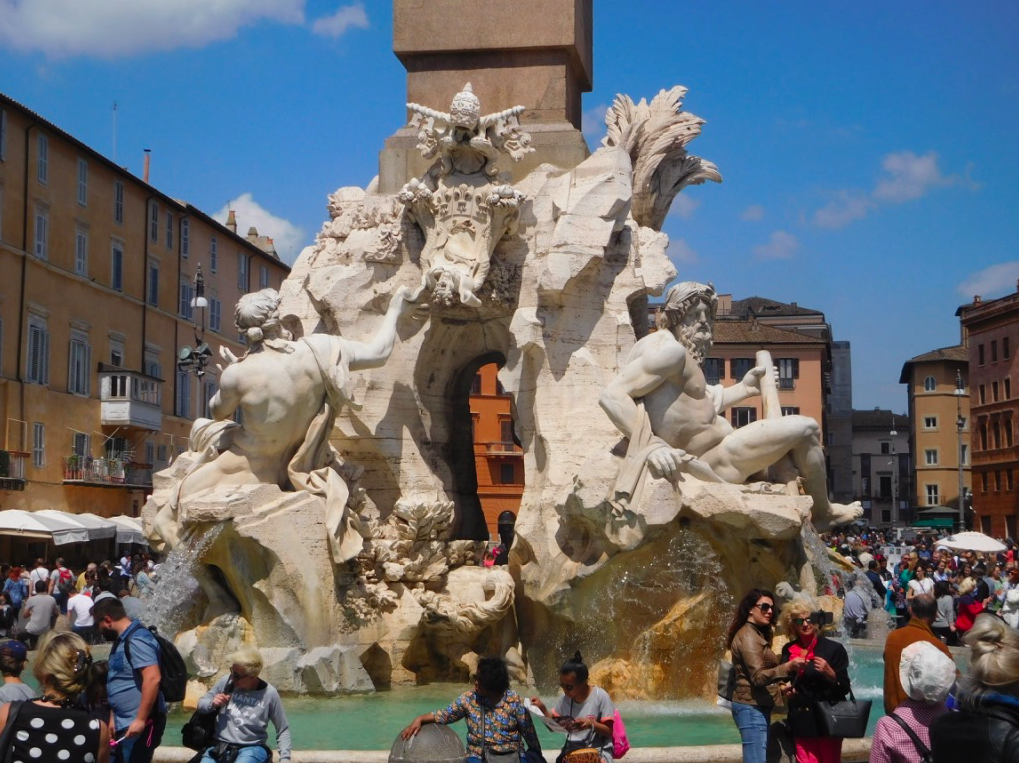
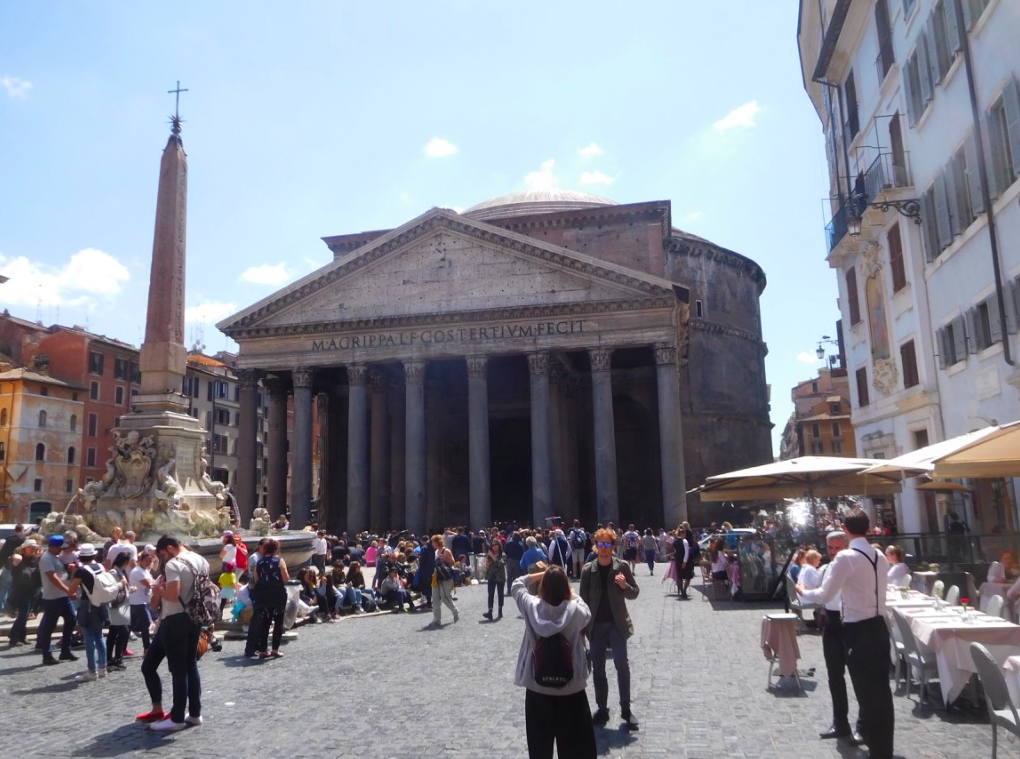
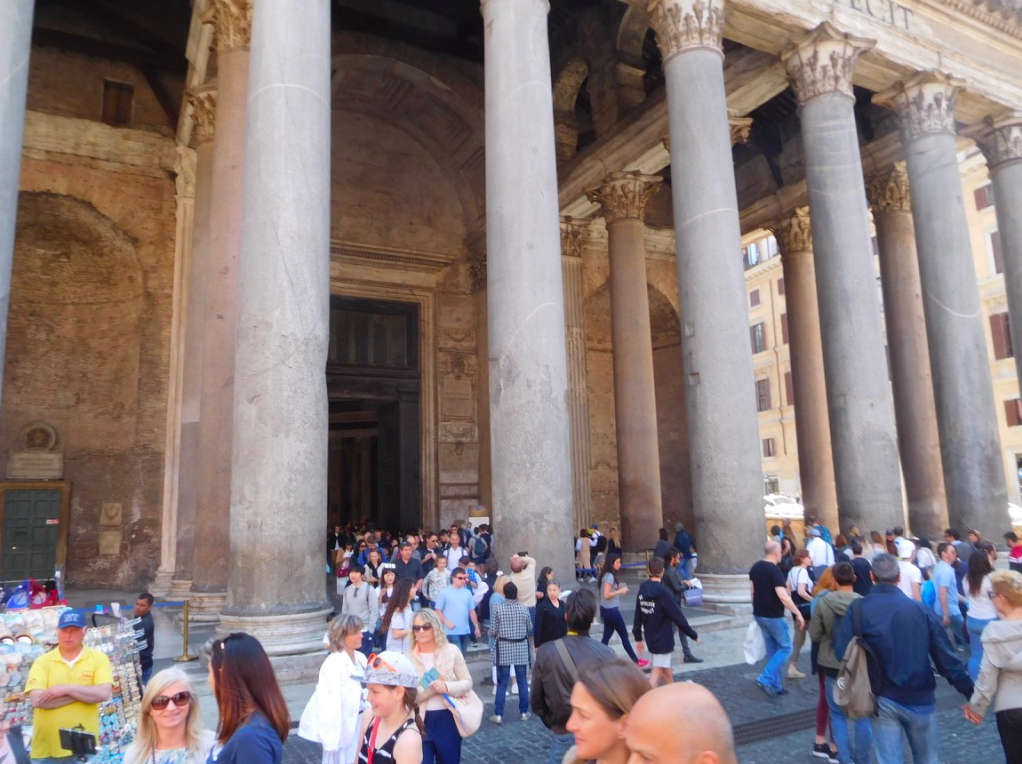
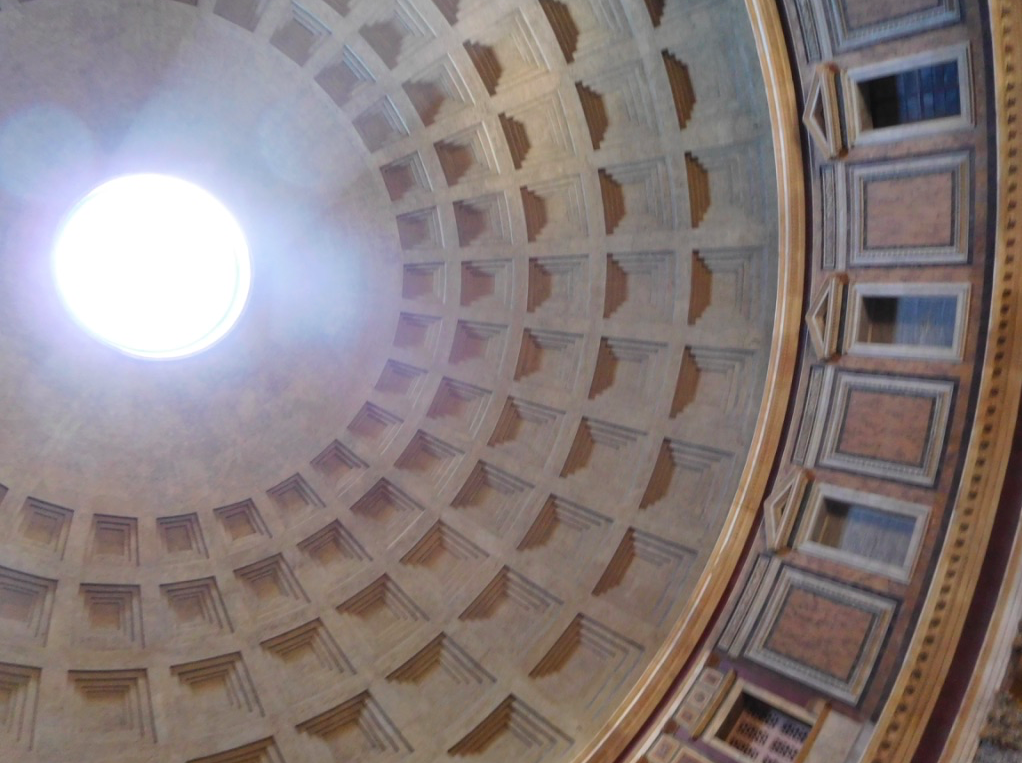
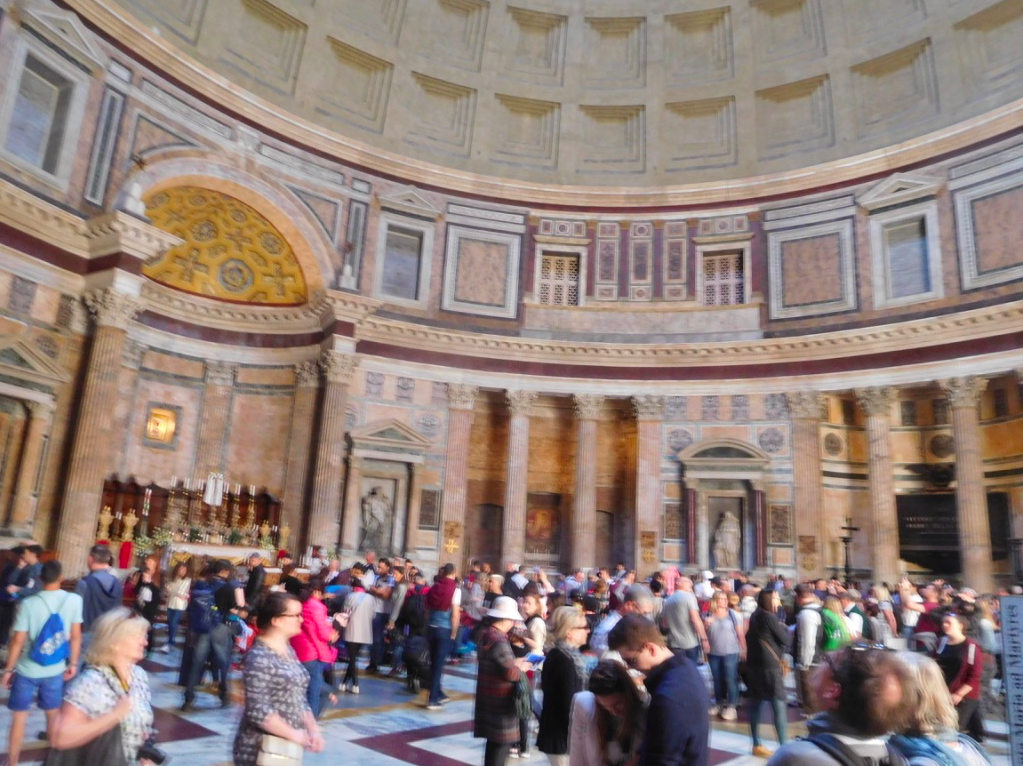
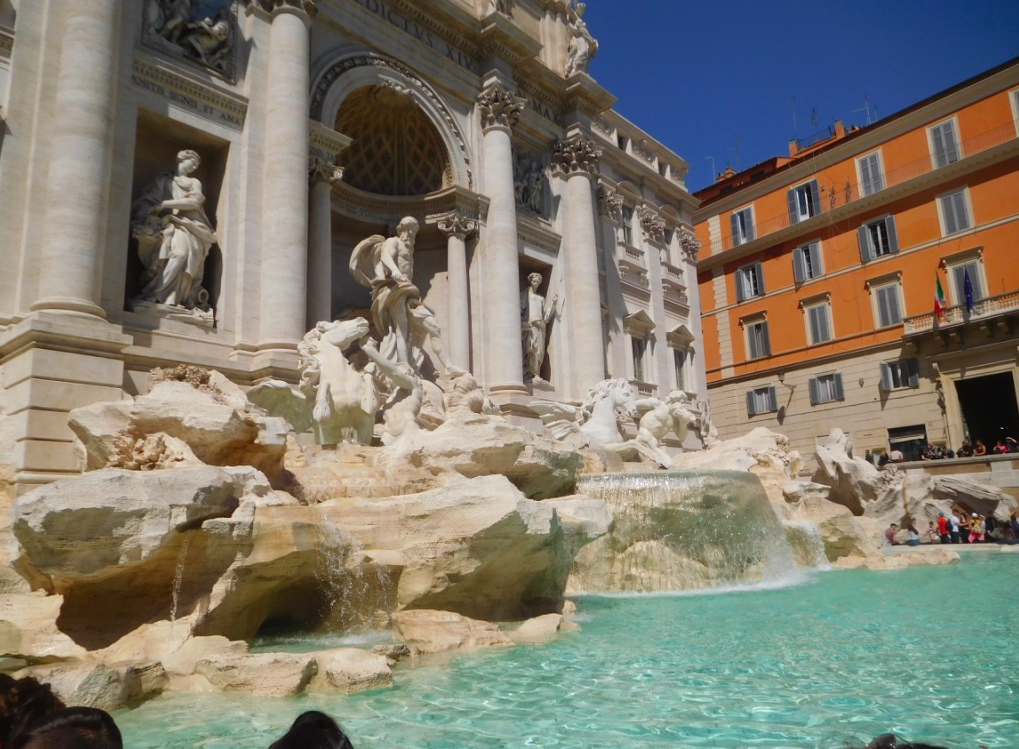
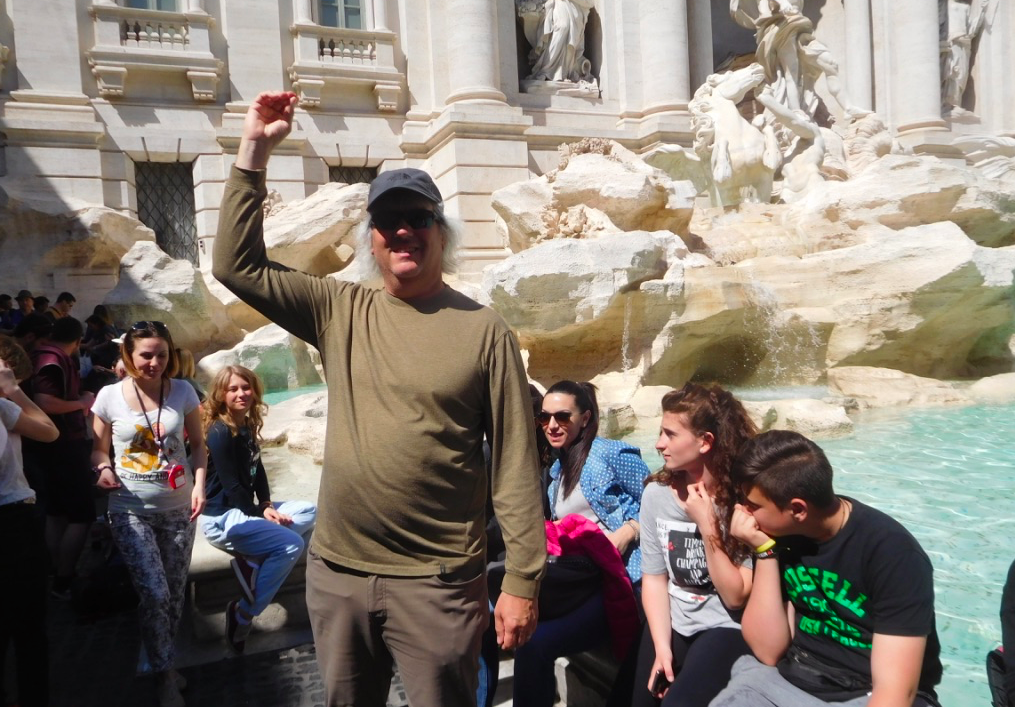
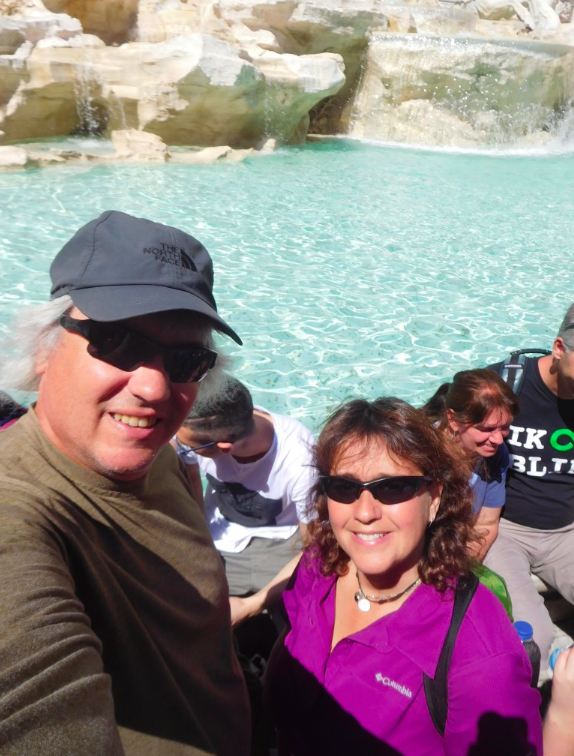
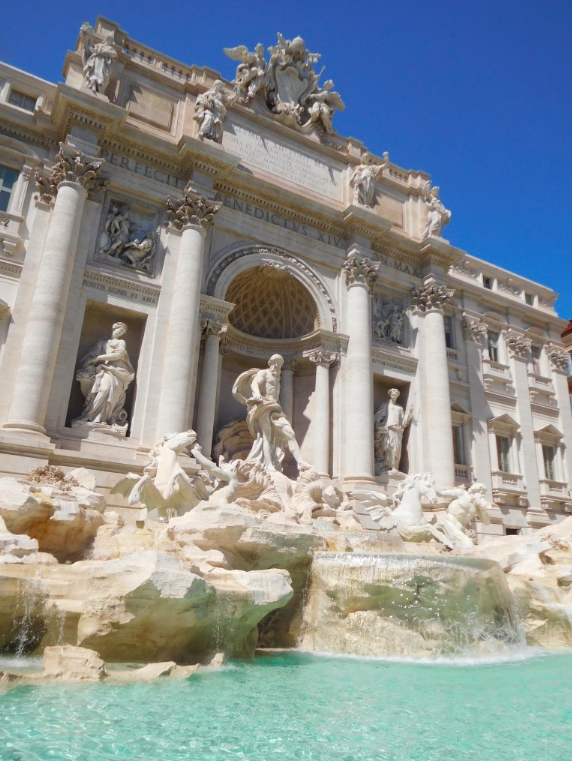
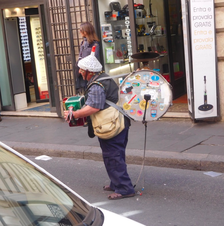
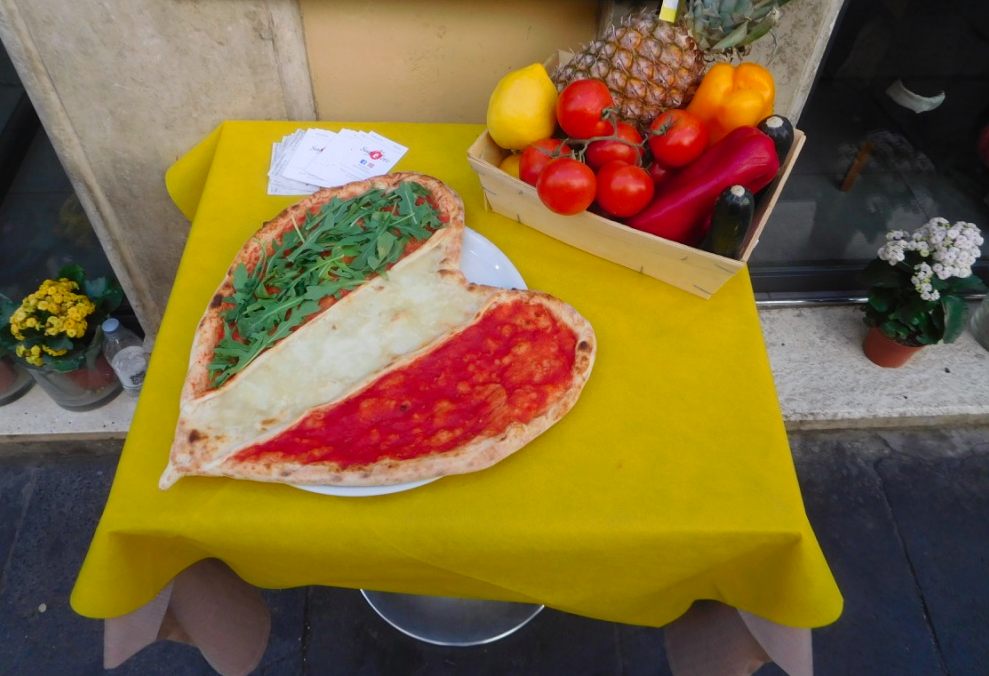
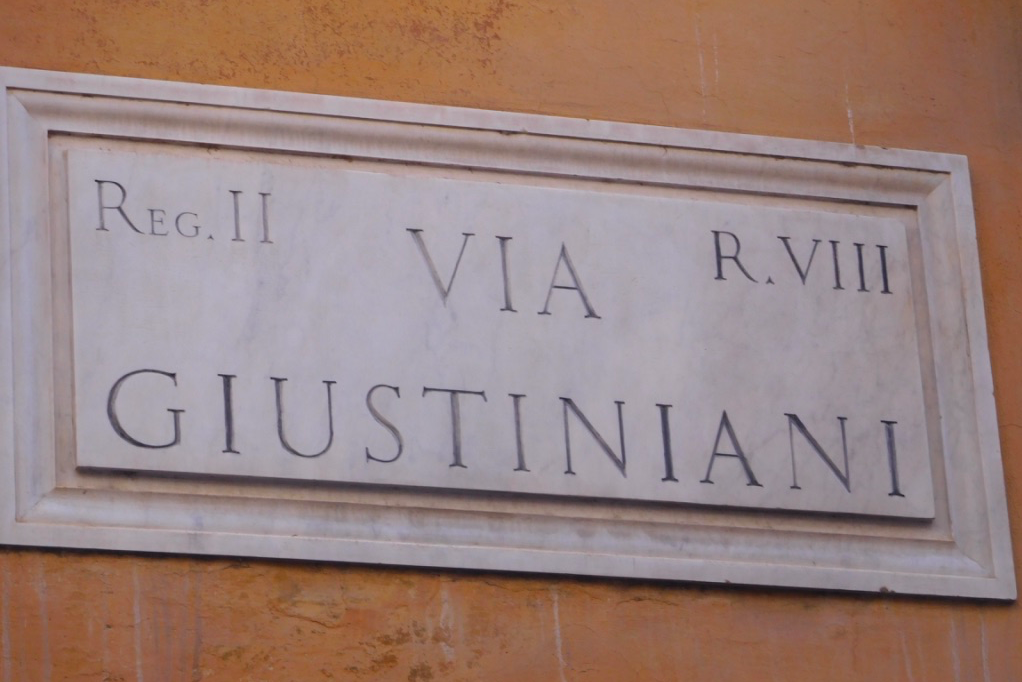
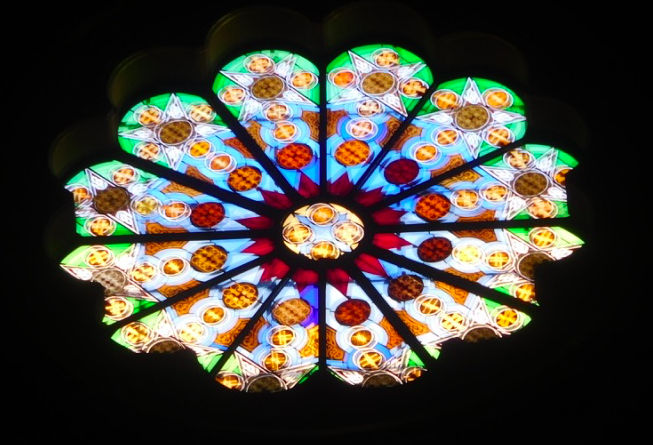
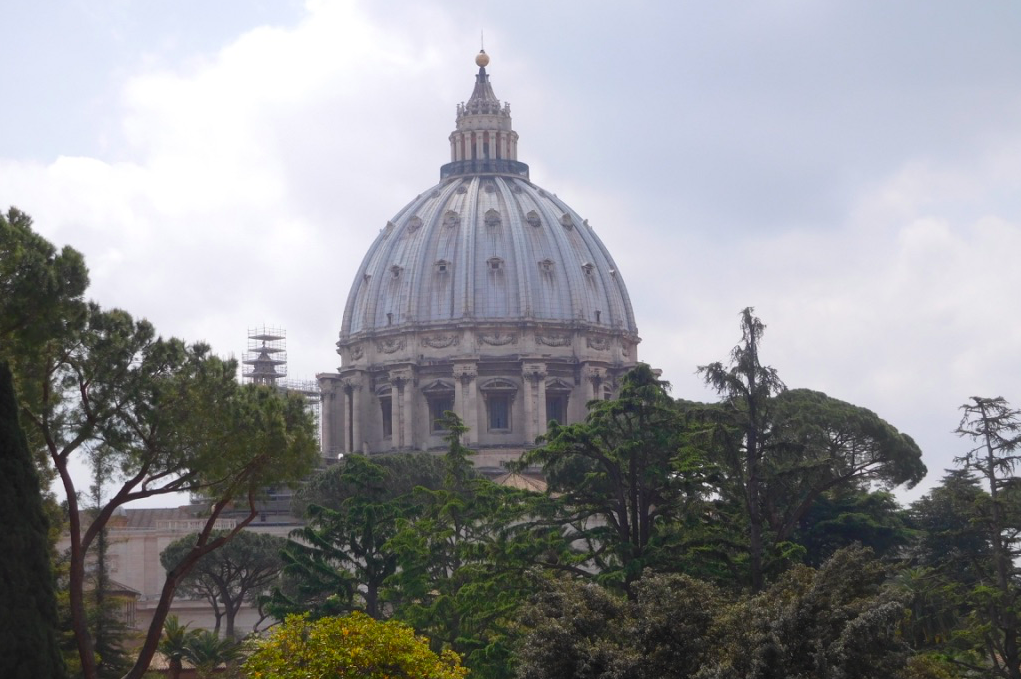
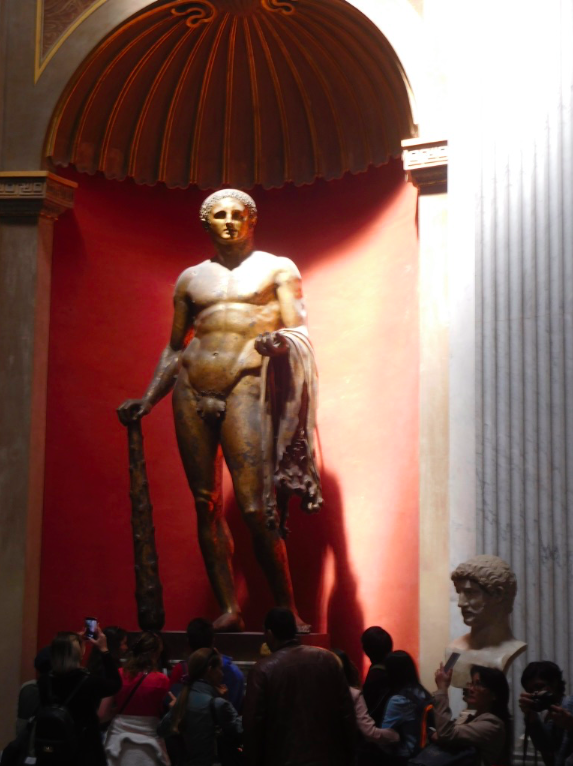
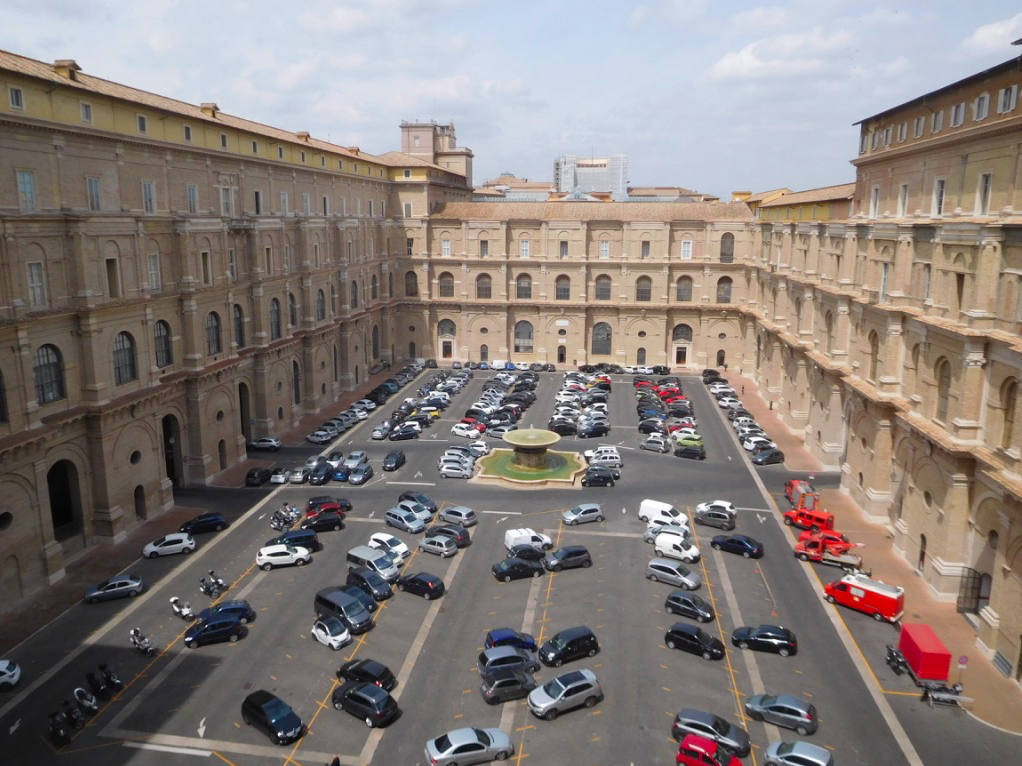
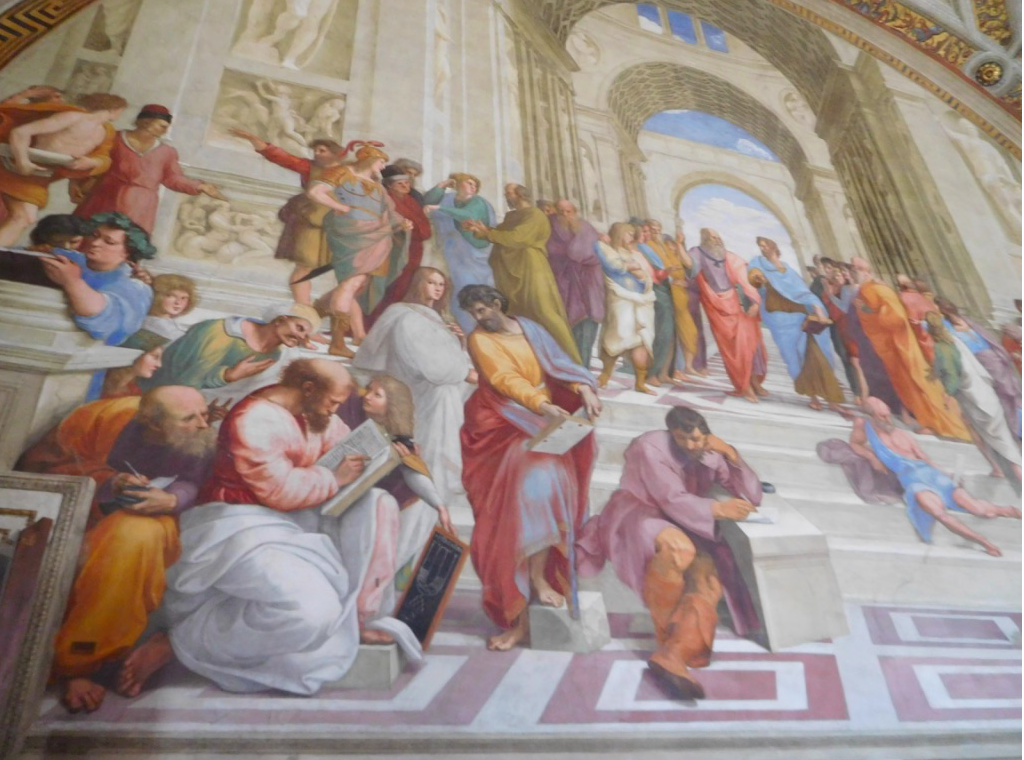
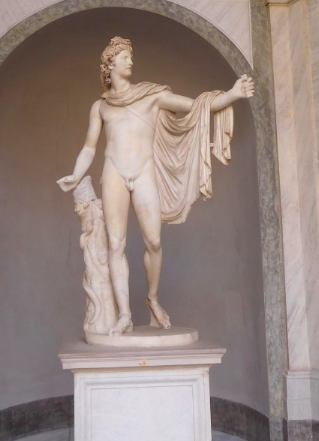
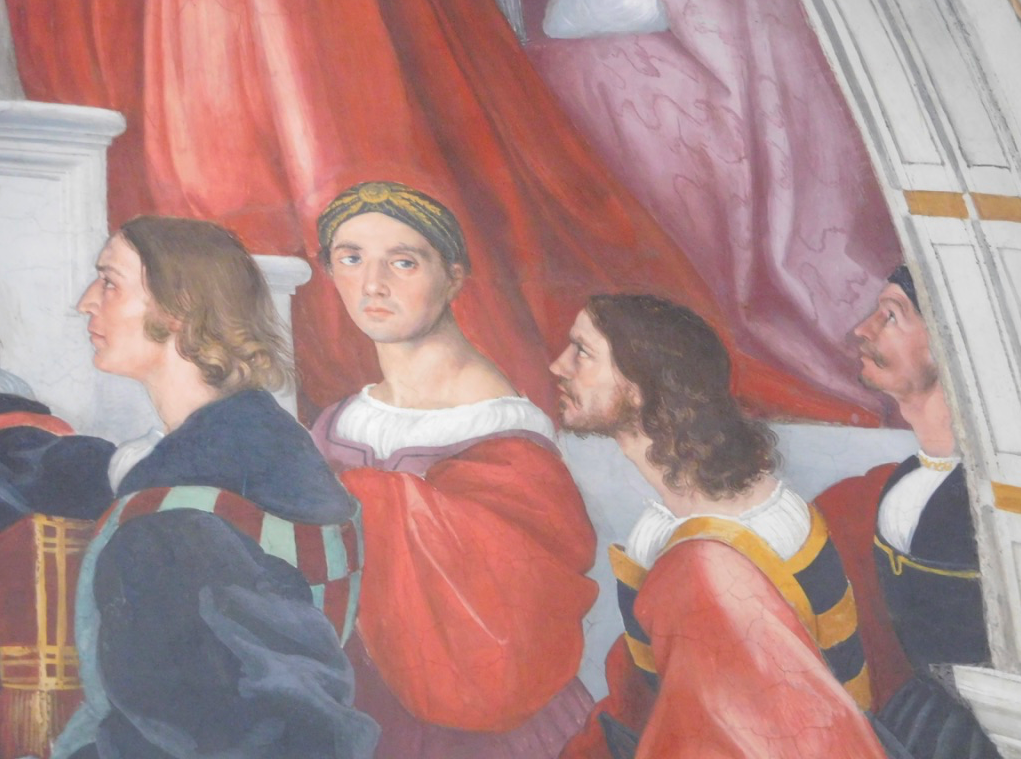
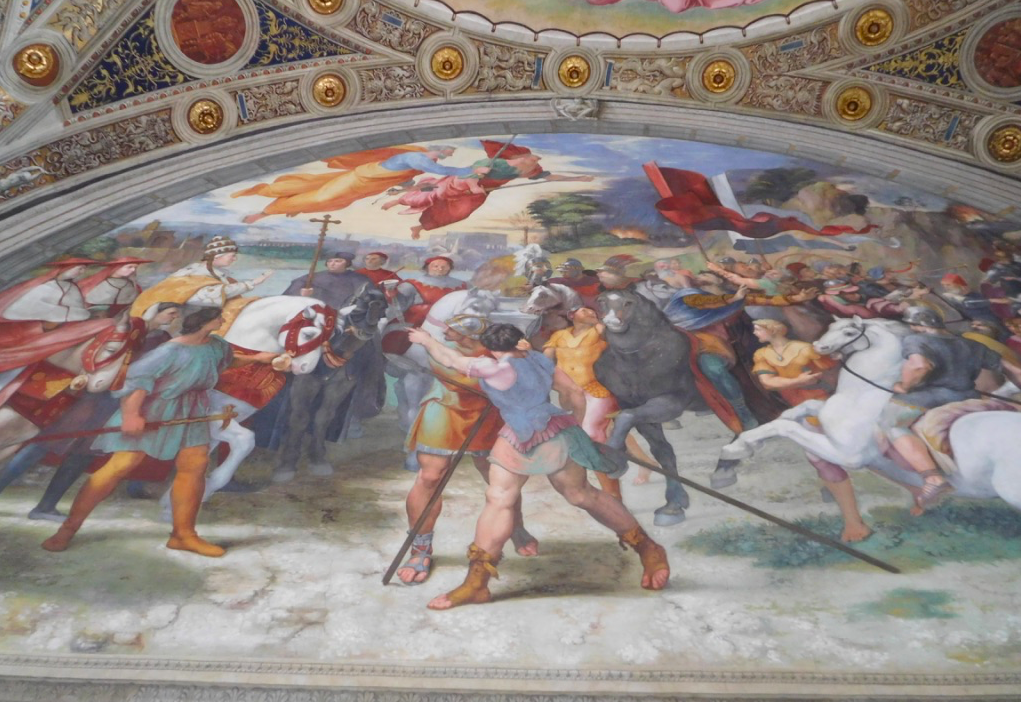
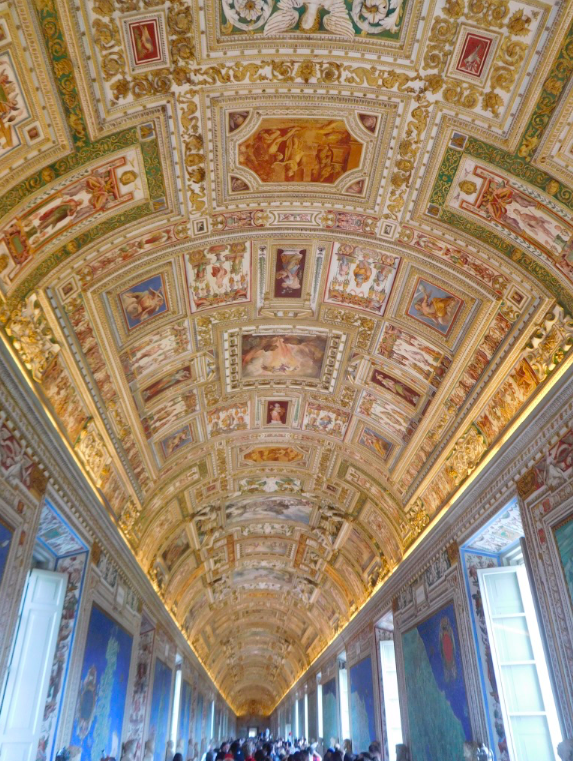
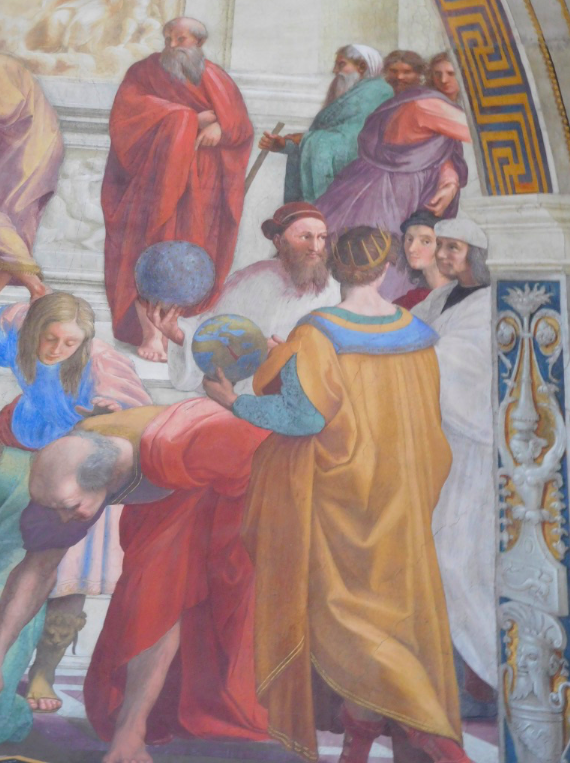
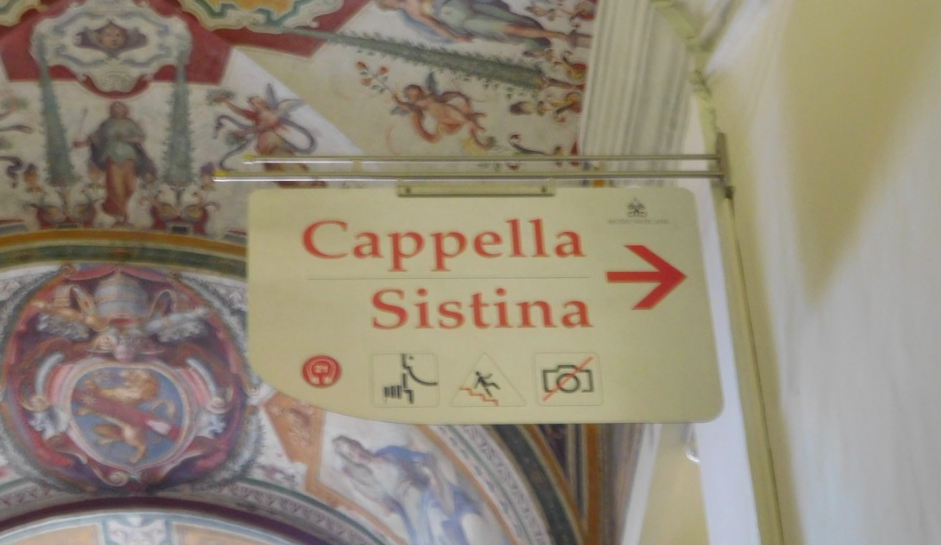
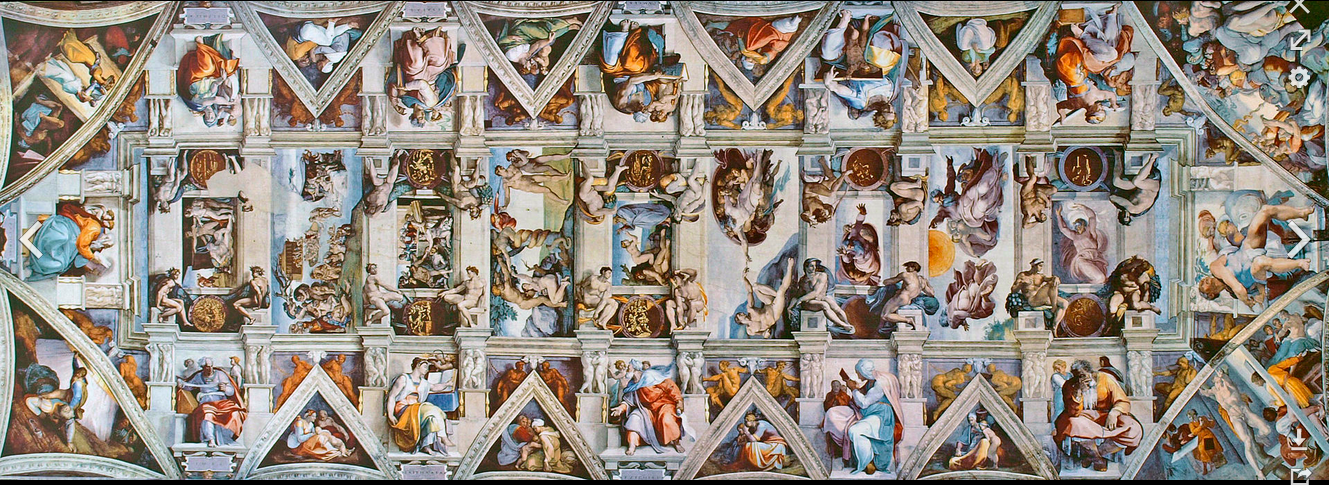
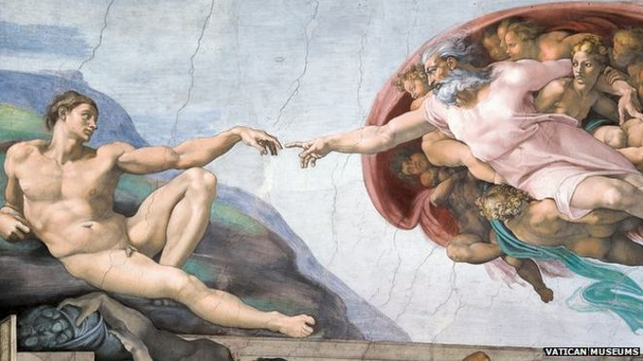
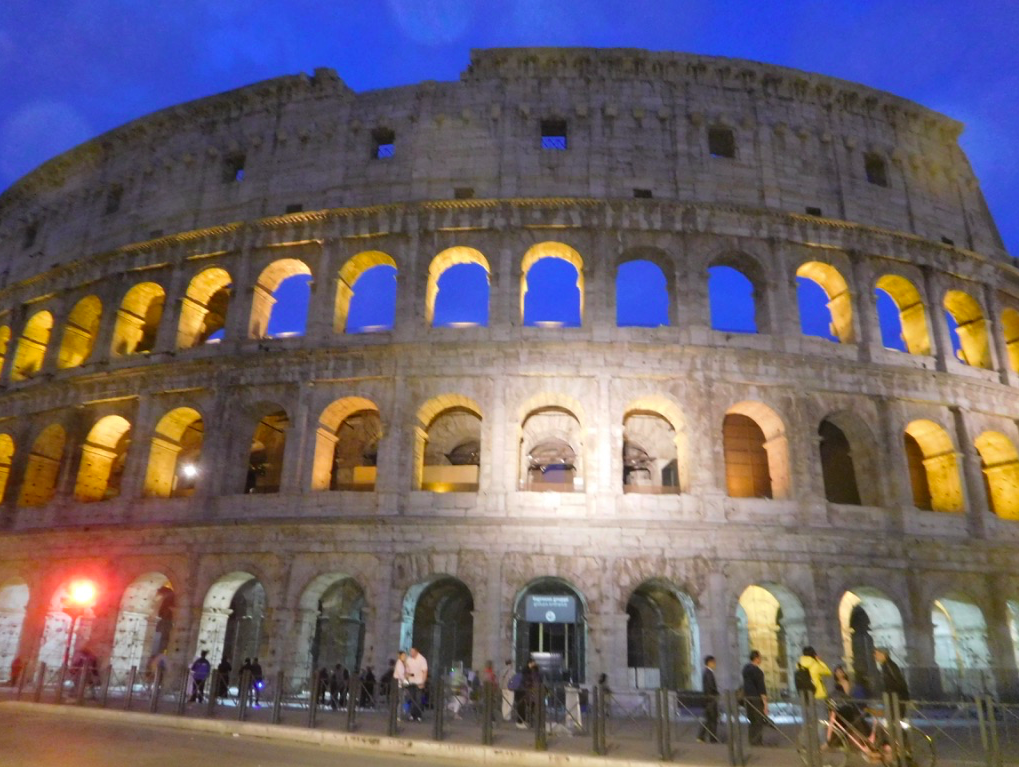
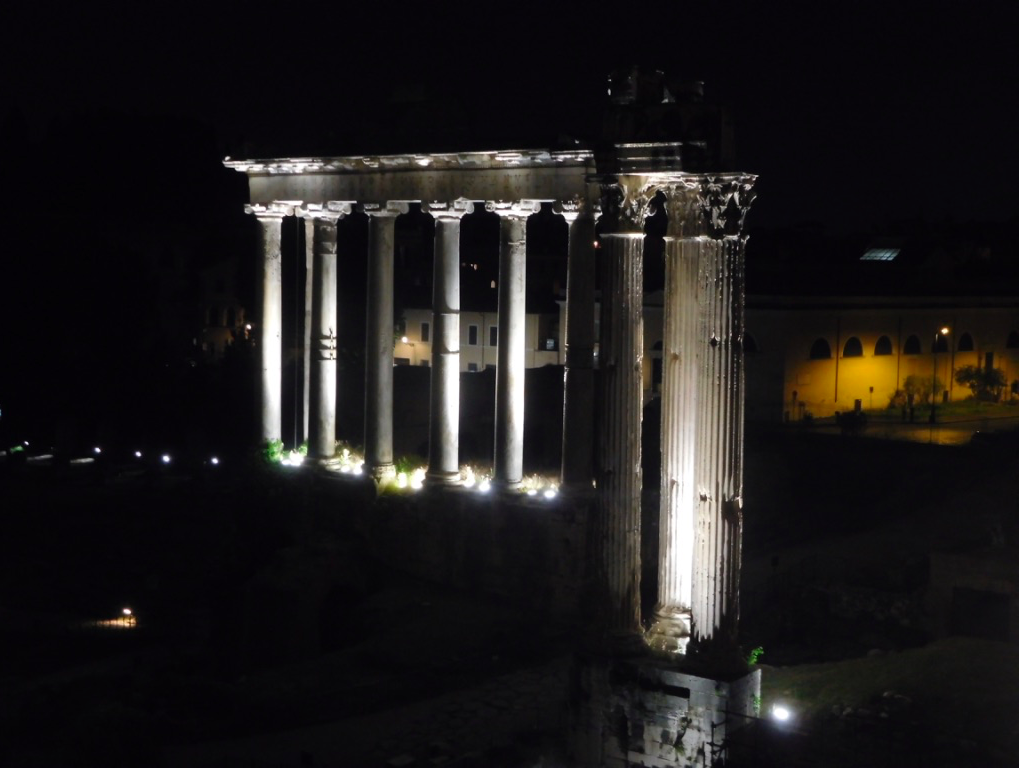
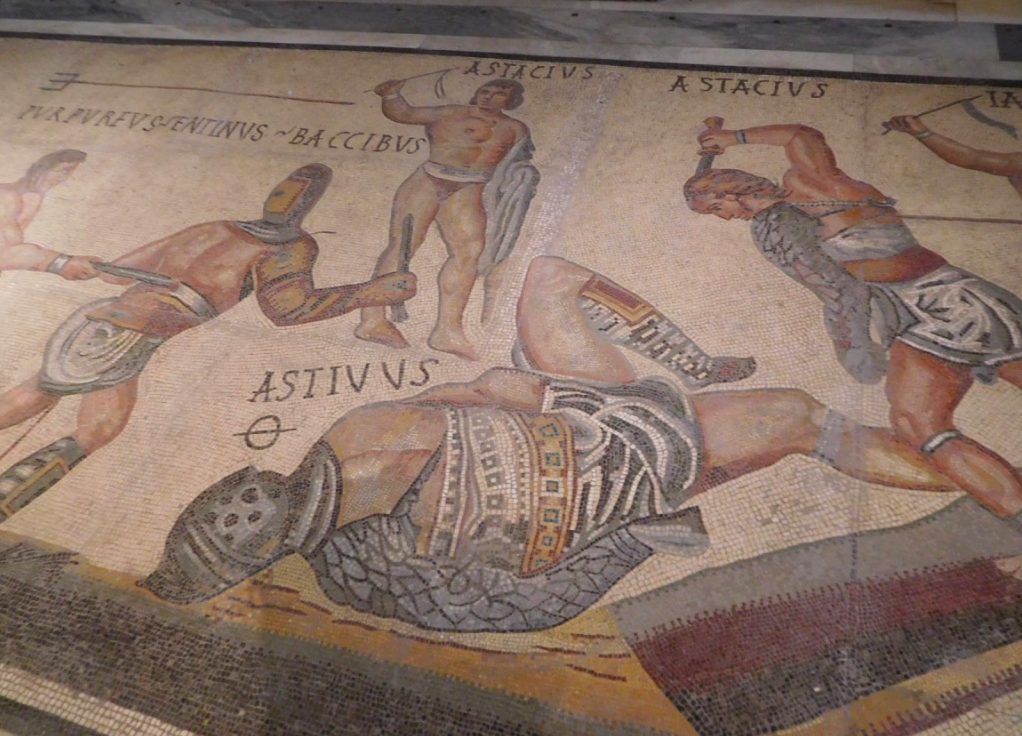
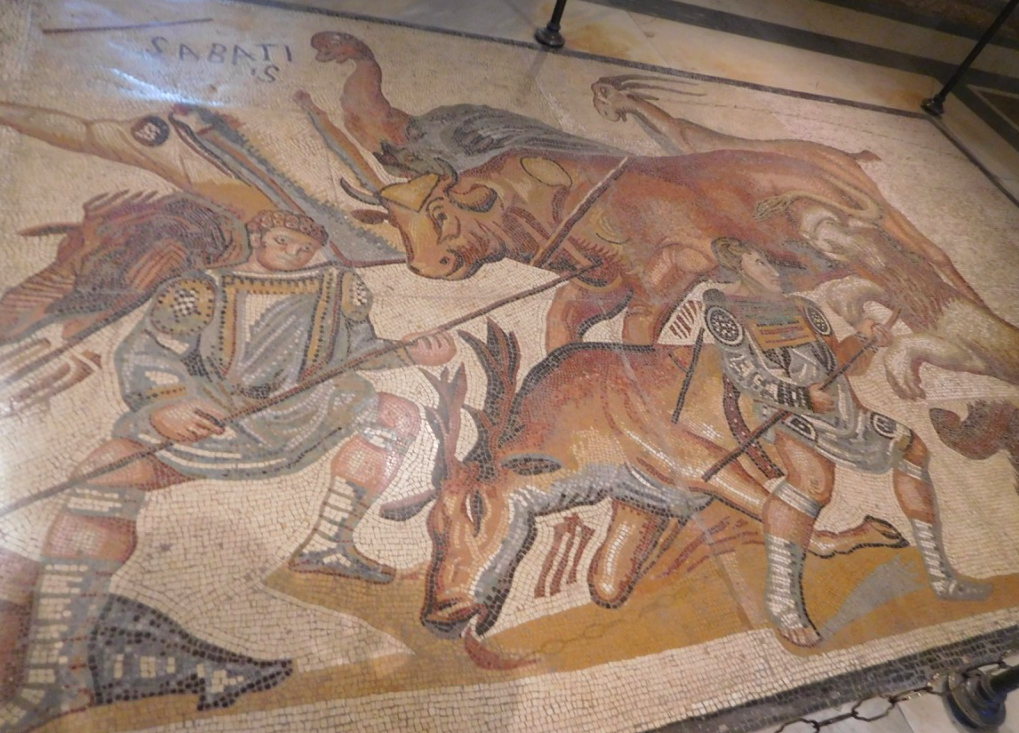
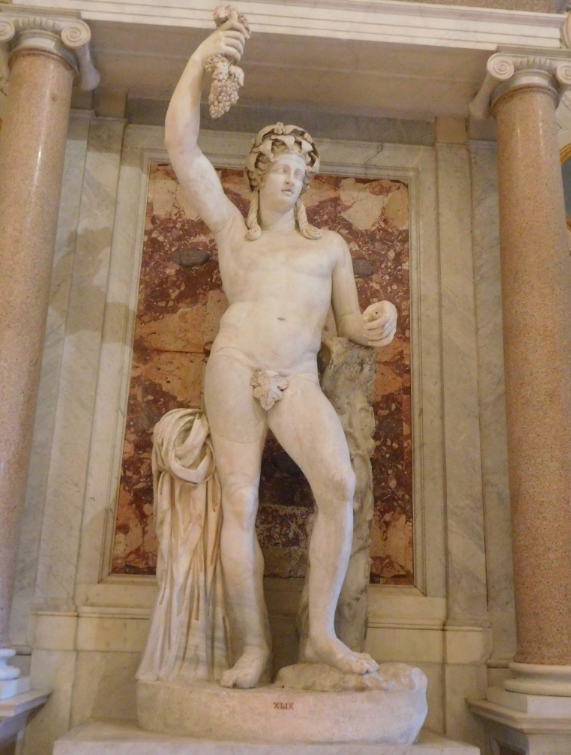
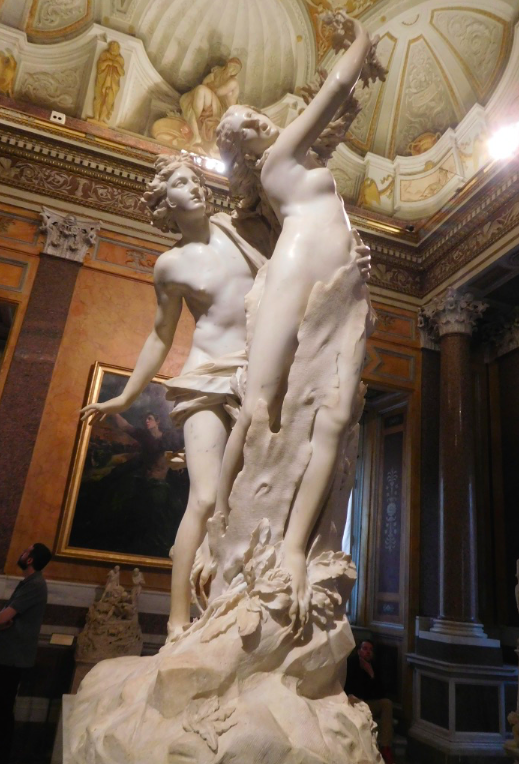
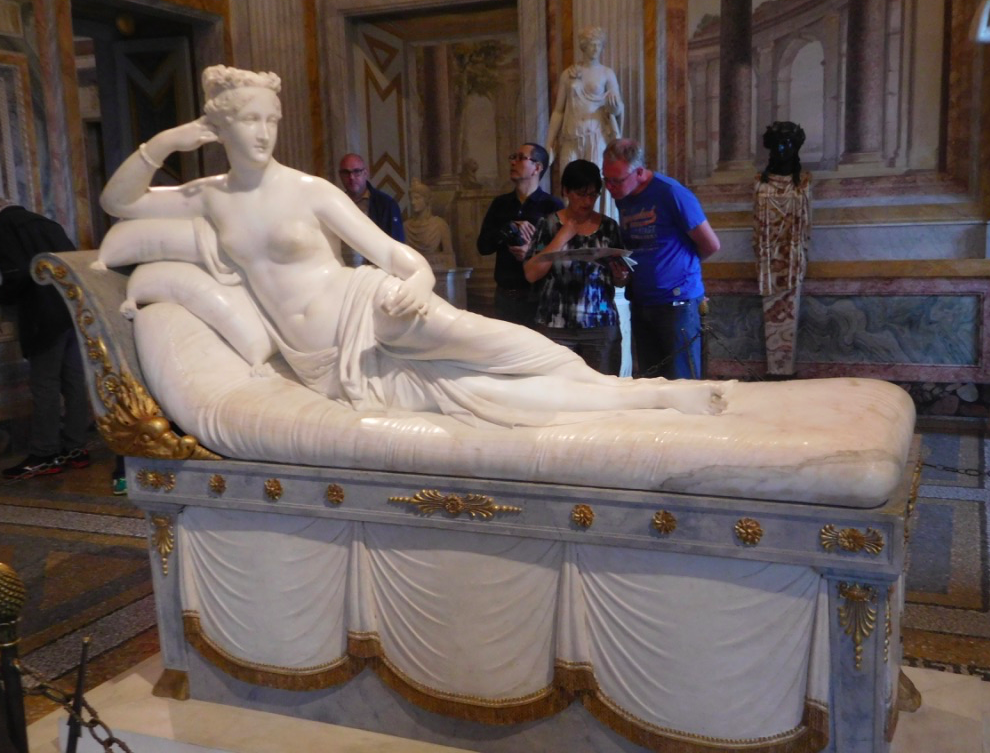
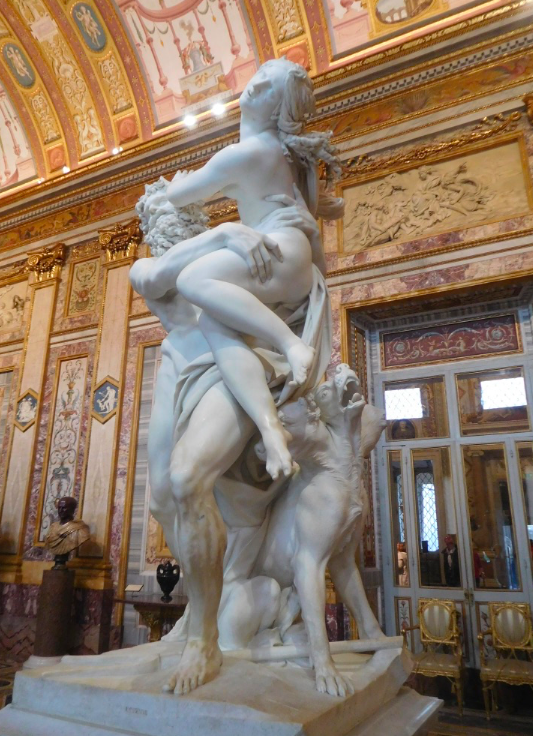
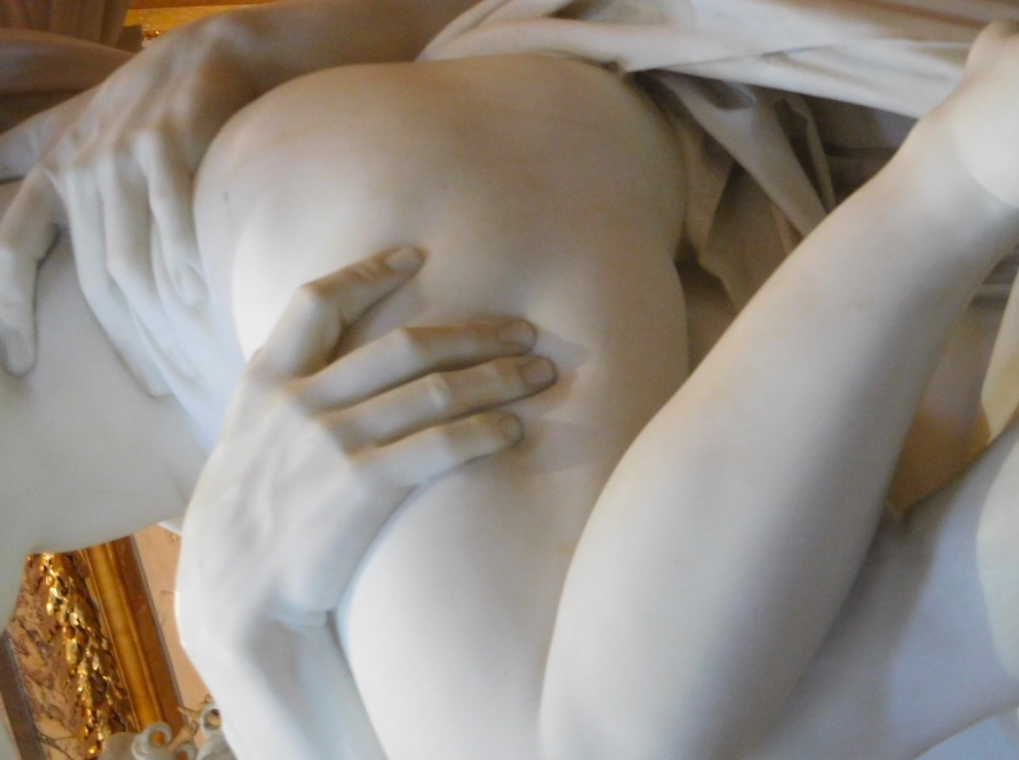
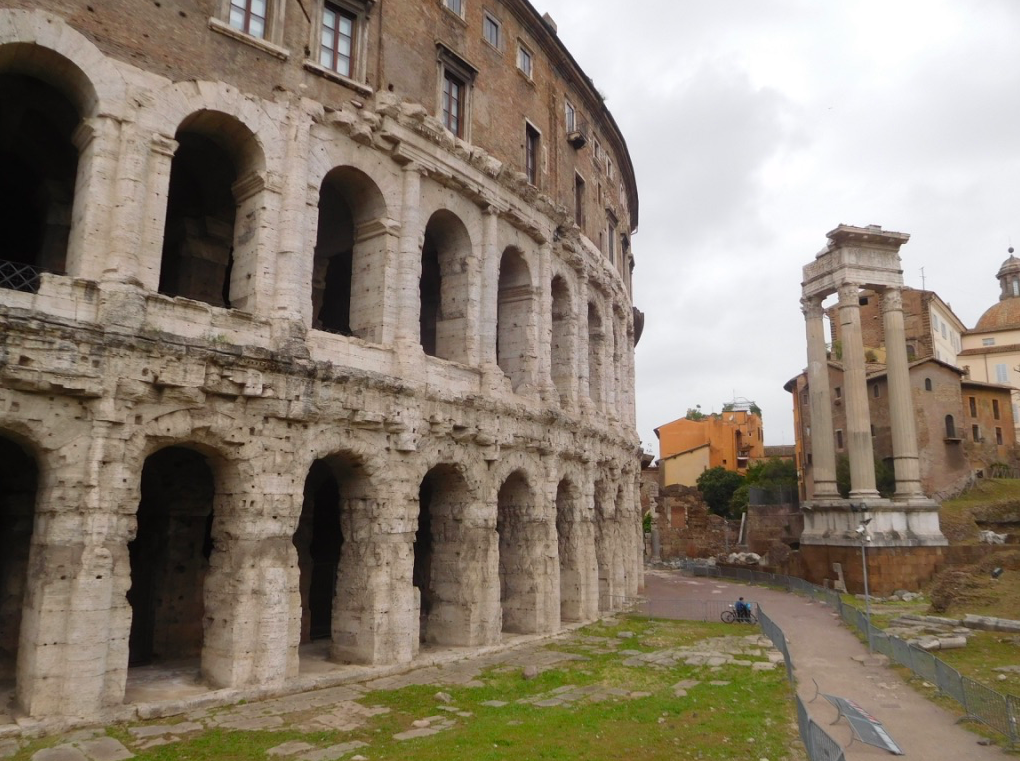
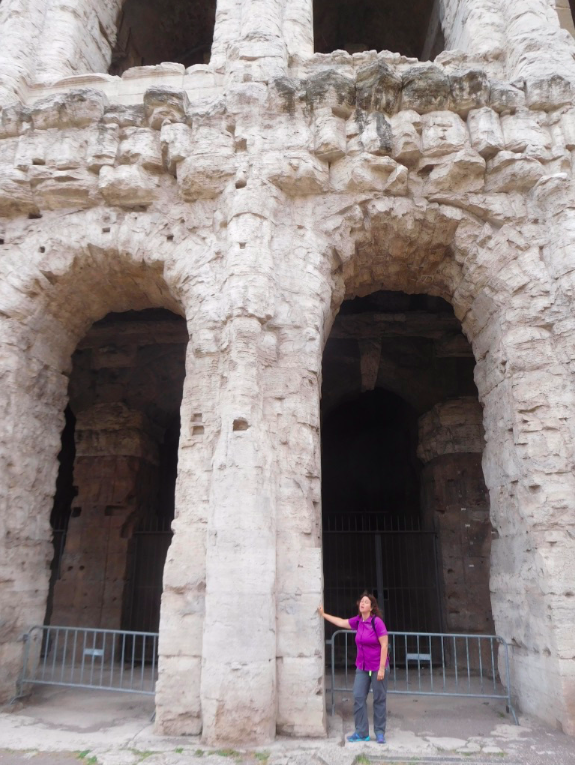
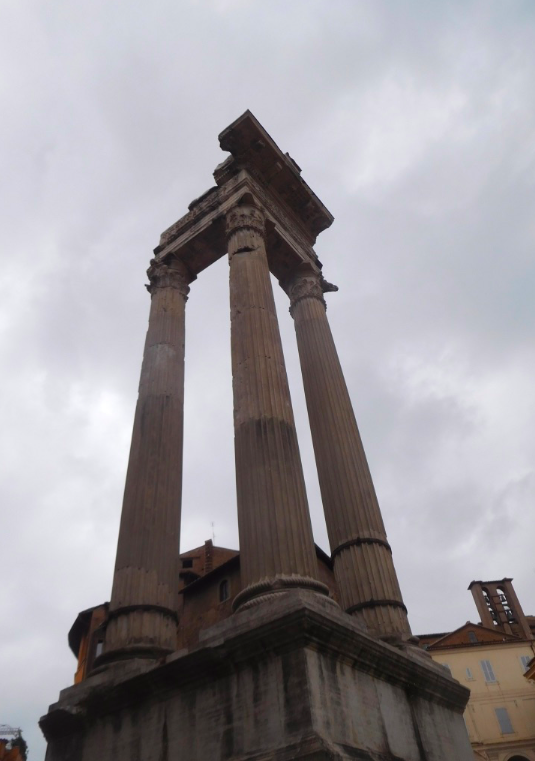
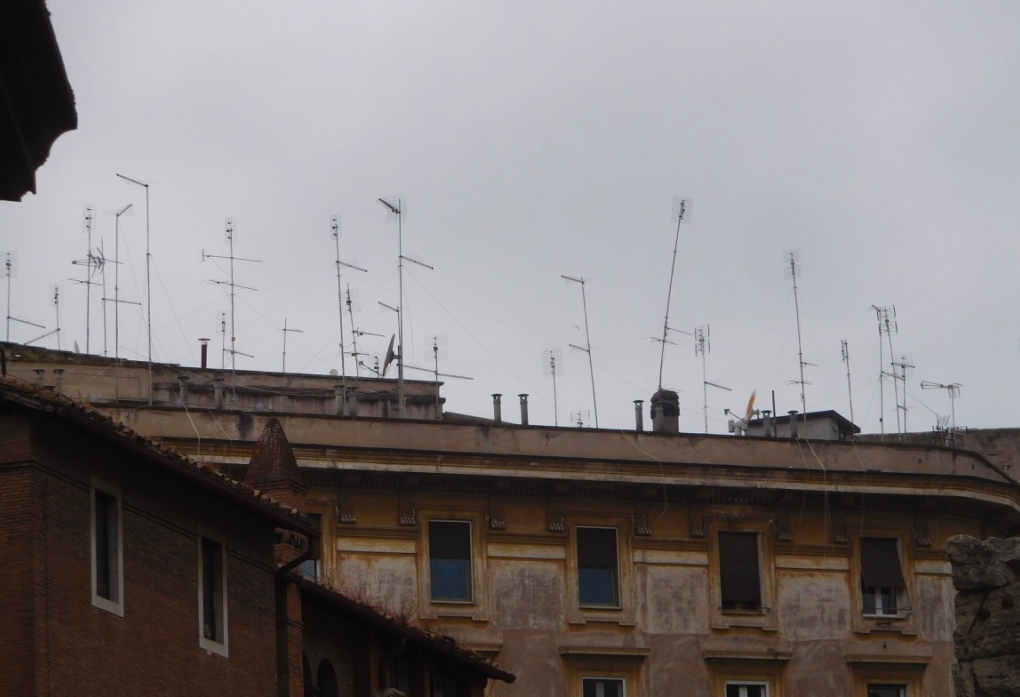
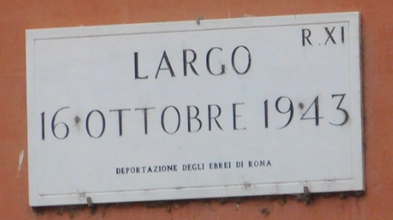
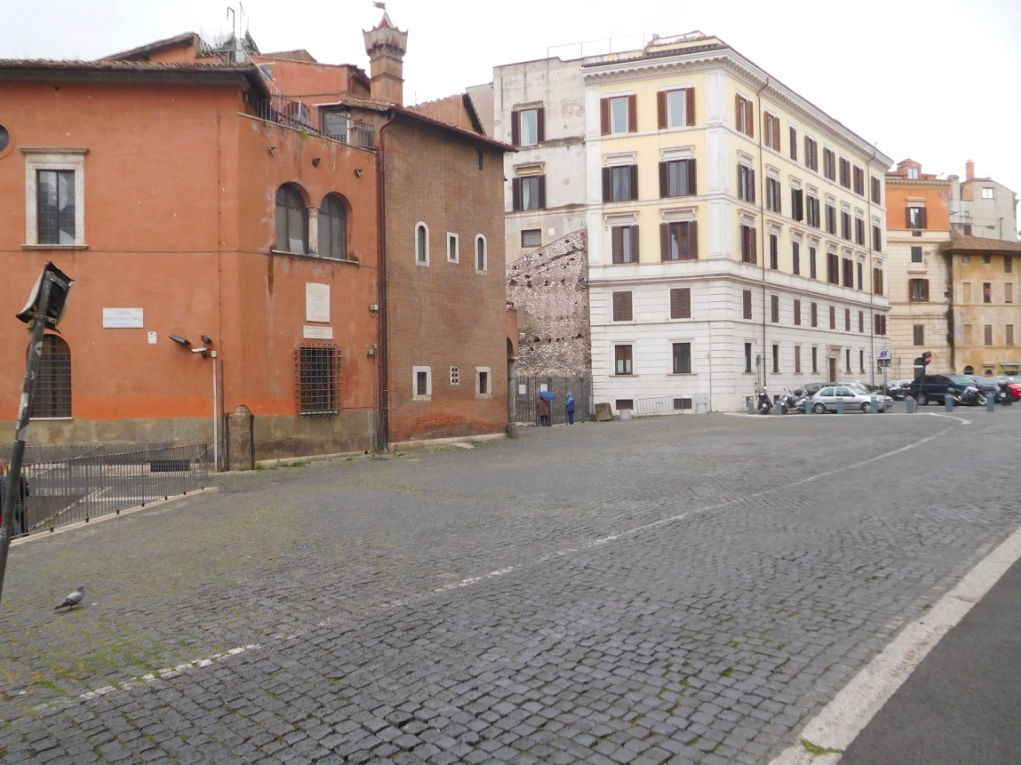
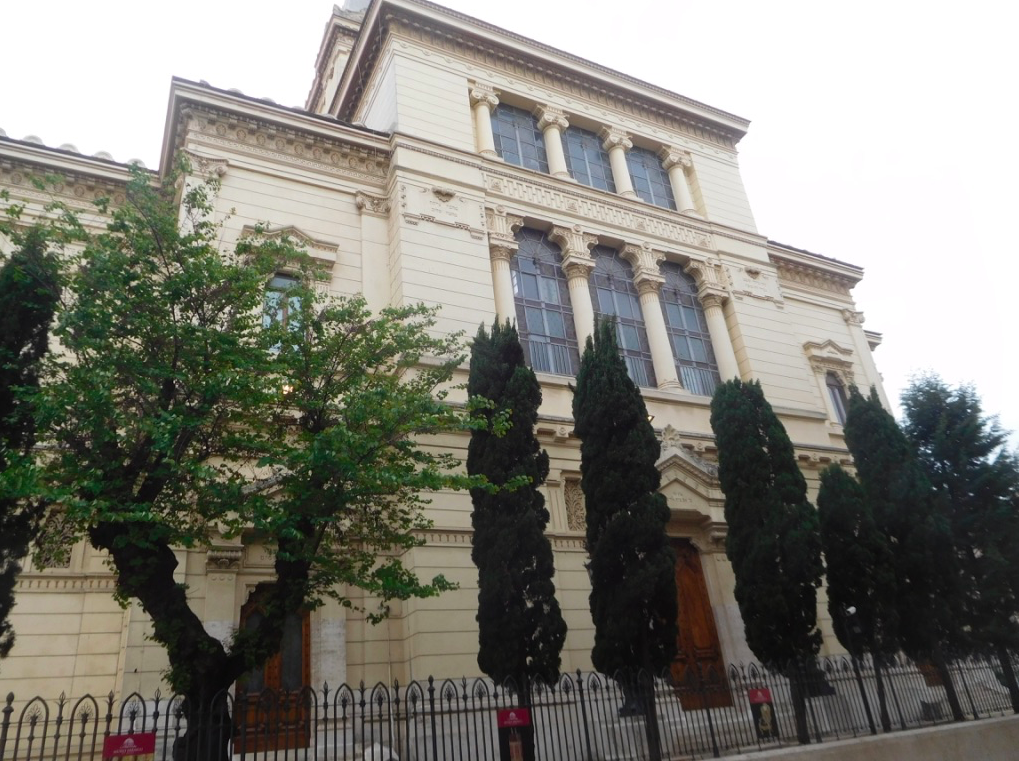
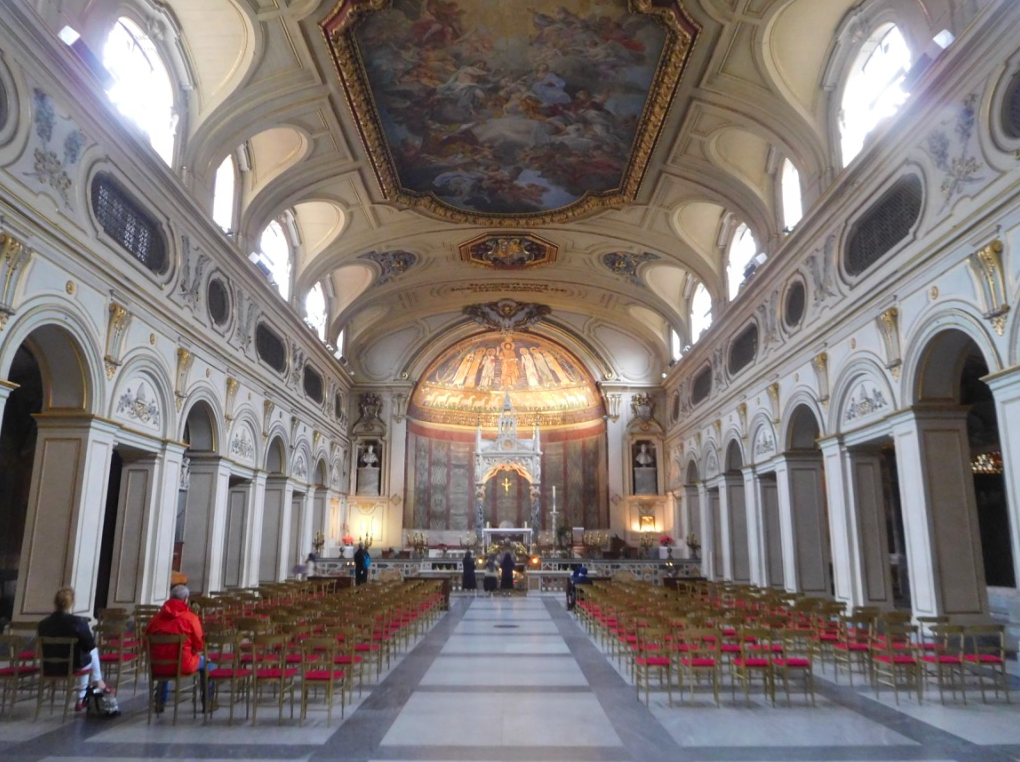
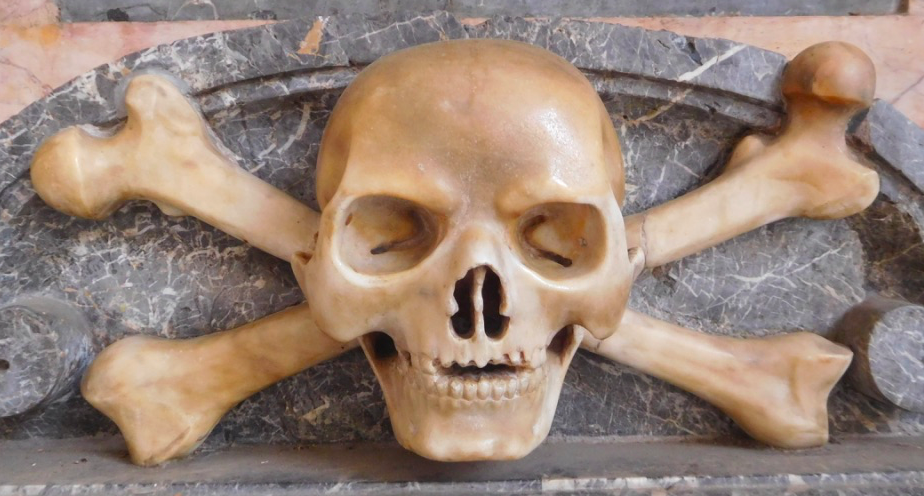
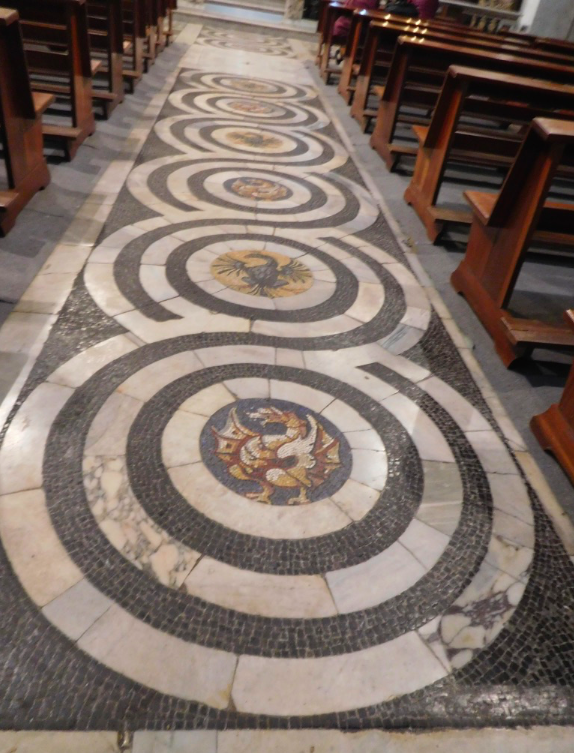
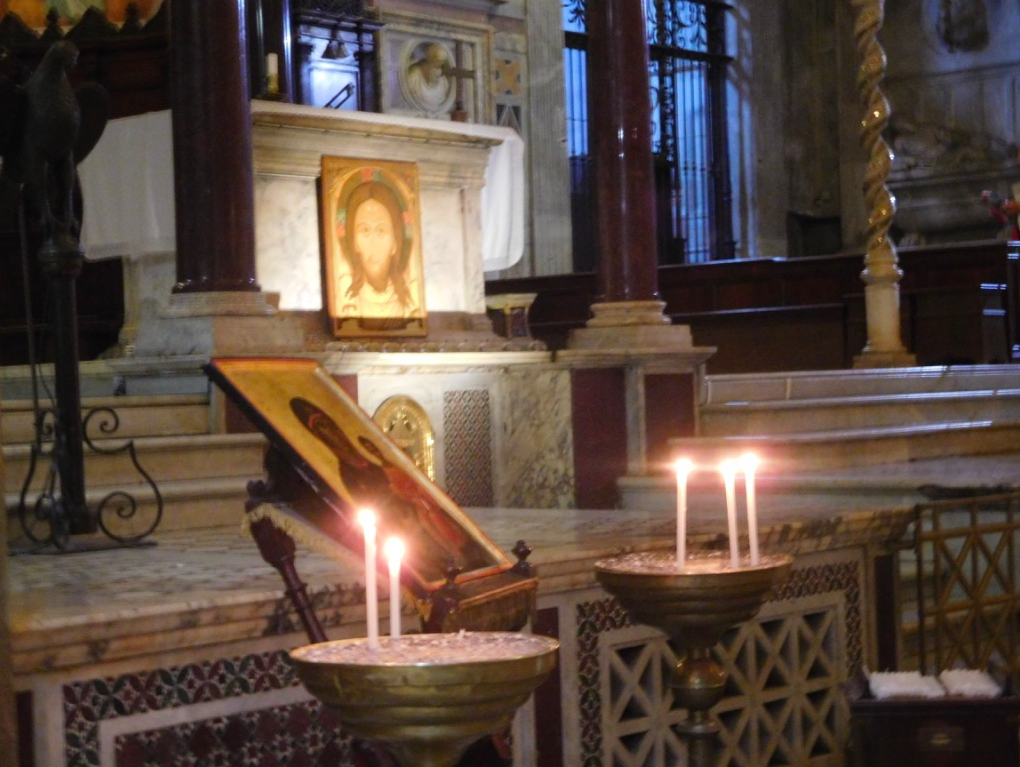
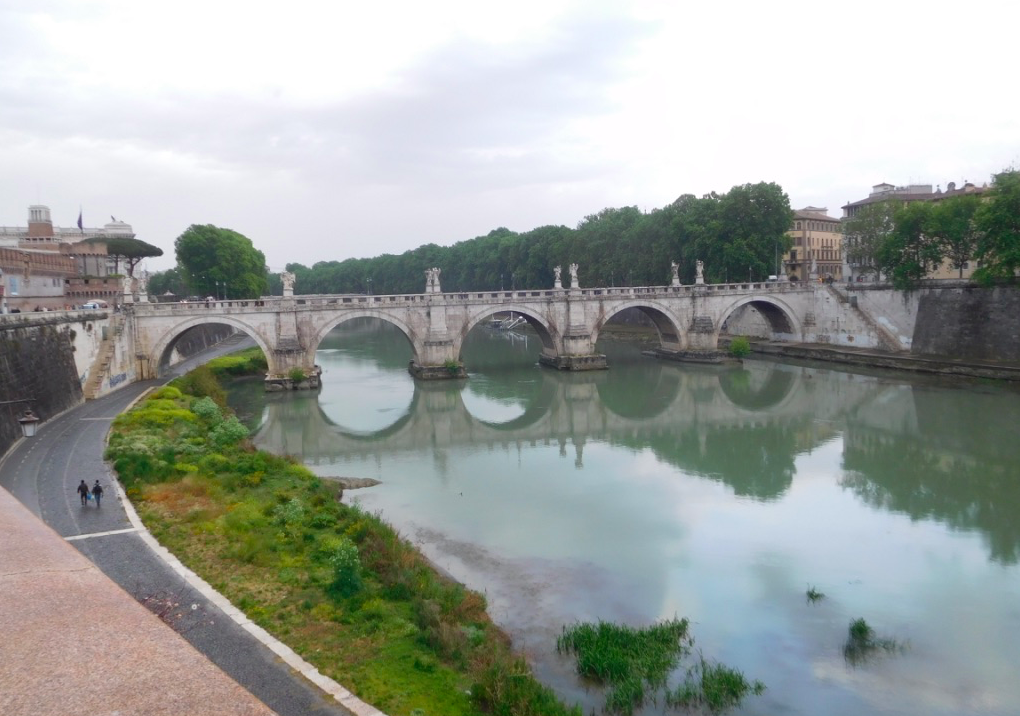
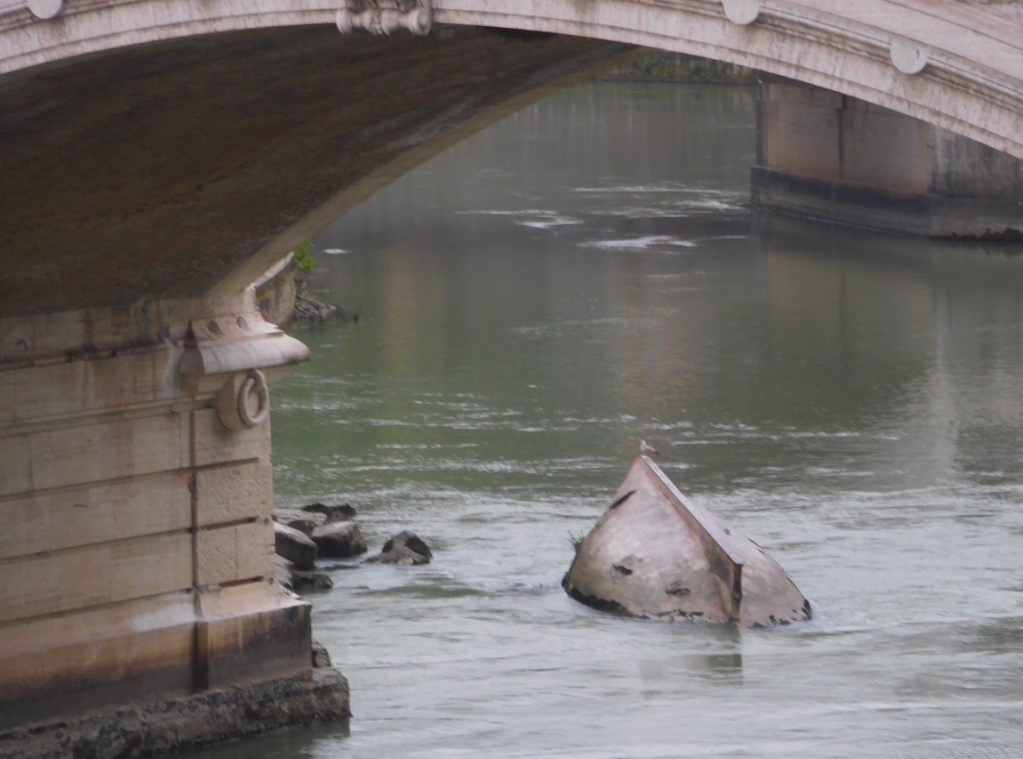
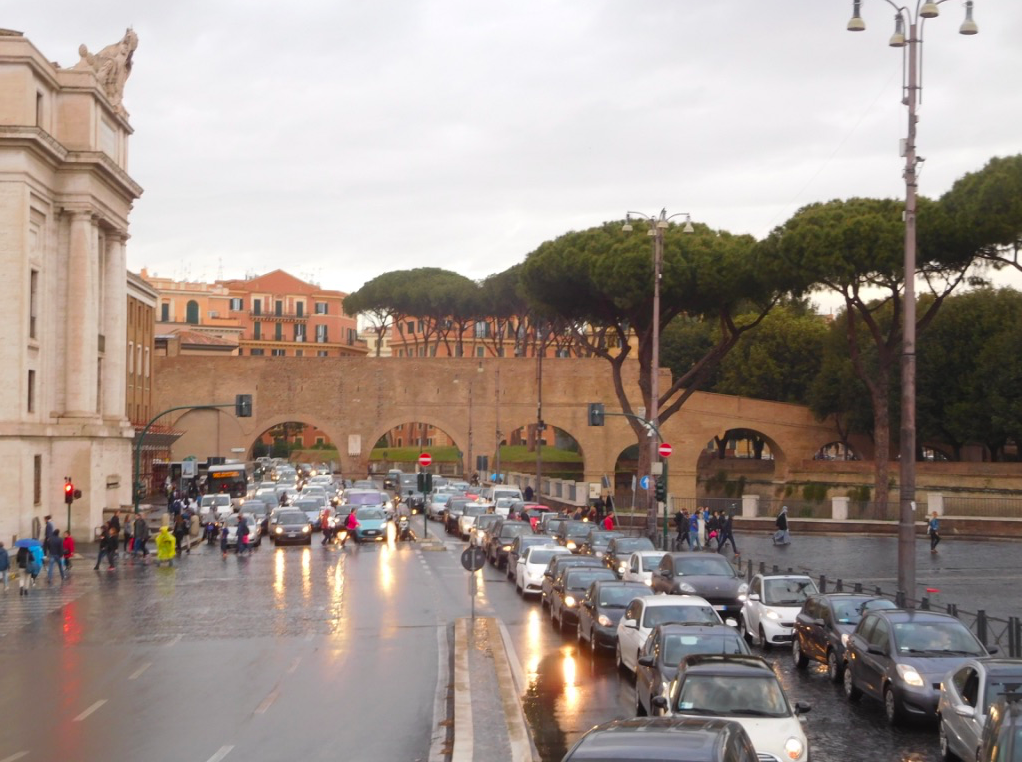
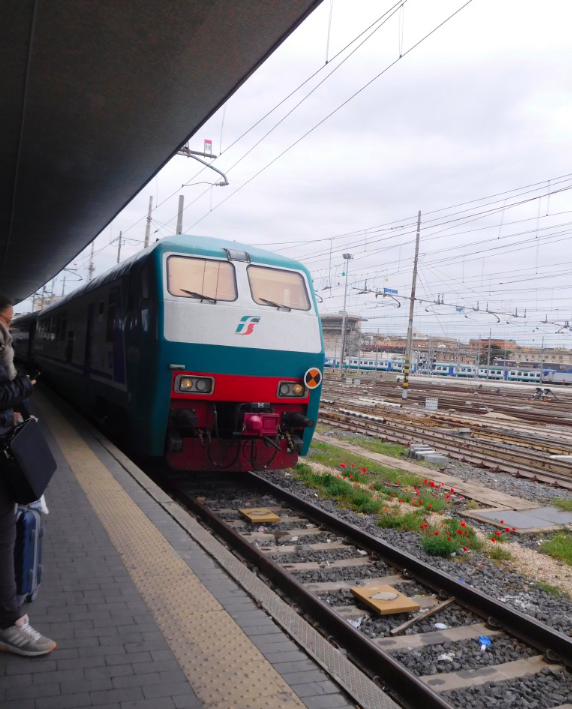
 RSS Feed
RSS Feed
